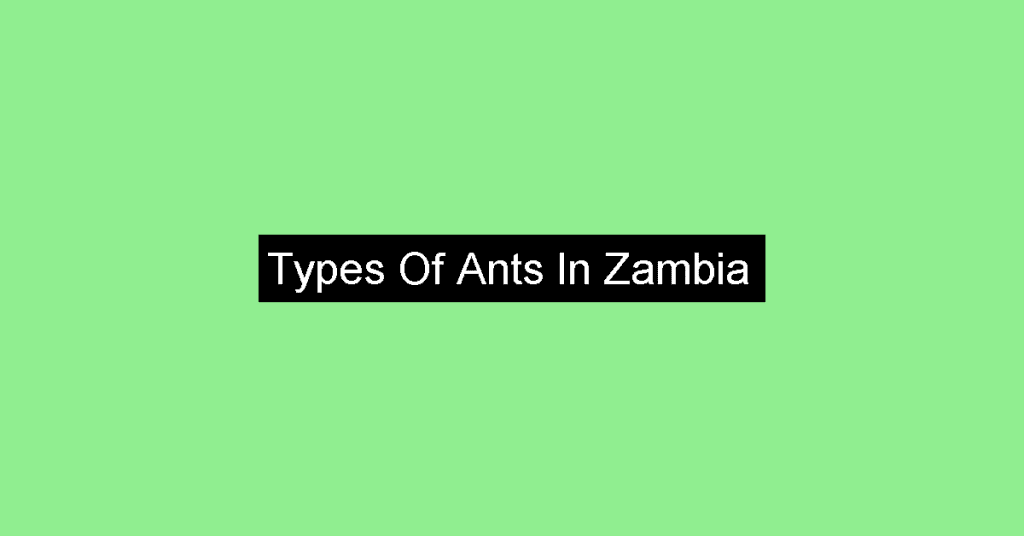Nestled in the heart of southern Africa, Zambia is a landlocked country known for its diverse wildlife and stunning natural landscapes. The country is situated in the tropical region, with a climate that is largely influenced by its altitude and proximity to the equator.
The environment in Zambia is characterized by vast savannas, dense forests, and winding rivers that are home to a variety of animal species. From majestic elephants to elusive leopards, Zambia’s wildlife is a sight to behold.
The country’s natural beauty and rich biodiversity make it a popular destination for nature enthusiasts and wildlife lovers alike. .
Types Of Ants In Zambia
The Types Of Ants In Zambia are listed here: Coccid-Tending Ants, Aenictogiton, Army Ants, Agraulomyrmex, Ankylomyrma, Trap-Jaw Ants, Anoplolepis, Aphomomyrmex, Apomyrma, Atopomyrmex, Axinidris, Baracidris, Bondroitia, Bothroponera, Brachyponera, Calyptomyrmex, Carpenter And Sugar Ants, Sneaking Ants, Marauder Ants, Sahara Ants, Cataulacus, Centromyrmex, Army Ants, Concoctio, Acrobat Ants, Cryptic Ants, Cyphoidris, Decamorium, Dicroaspis, Diplomorium, Discothyrea, Driver Ants, Ecphorella, Euponera, Crypt Ants, Lepisiota, Leptanilla, Razorjaw Ants, Megaponera, Melissotarsus, Shield Ants, Mesoponera, Harvester Ants, Metapone, Microdaceton, Trailing Pharaoh And Timid Ants, Myrmicaria, Mystrium, Nesomyrmex, Crazy Ants, Ocymyrmex, Trap-Jaw Ants, Oecophylla, Ophthalmopone, Oxyopomyrmex, Paltothyreus, Crazy Ants, Petalomyrmex, Phasmomyrmex, Big Headed Ants, Pheidologeton, Phrynoponera, Restless Ants, Platythyrea, Plectroctena, Spiny Ants, Prionopelta, Pristomyrmex, Probolomyrmex, Hairy Curltail Ants, Promyopias, Psalidomyrmex, Pseudolasius, Fierce Pennet And Pavement Ants, Santschiella, Simopone, Fire Ants, Sphinctomyrmex, Vampire Ants, Miniature Trap-Jaw Ants, Tapinolepis, Tapinoma, Pale-Footed Ants, Slave-Making Ants, Terataner, Pavement Ants, Old World Slender Ants, Groove-Headed Fierce Ants.
If you’ve found some other ants in this region, contact us, and we will add them to the list!
1) Coccid-Tending Ants, Acropyga
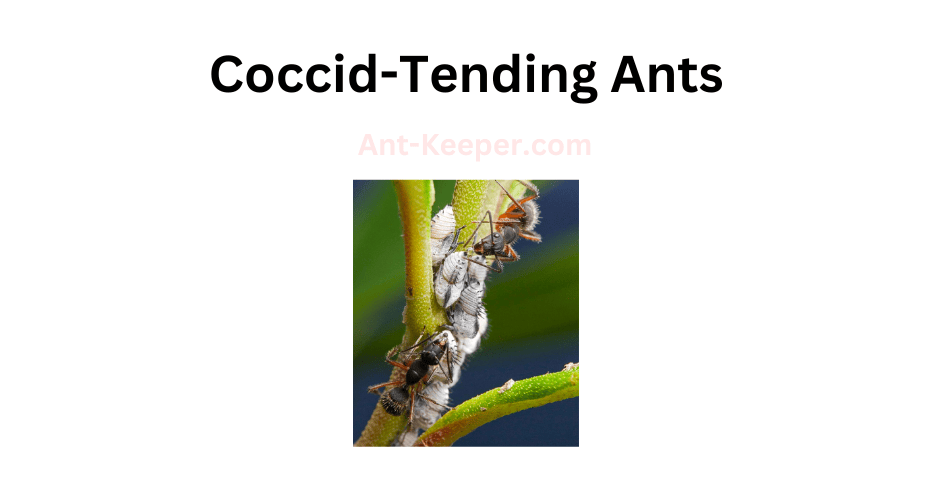
Coccid-tending ants are a group of ants that have a mutualistic relationship with coccids, also known as scale insects.
These ants protect and care for the coccids, which in turn provide the ants with a sugary substance called honeydew.
Coccid-tending ants are typically small in size, ranging from 2 to 5 millimeters in length.
They have a reddish-brown coloration and a slender body shape.
These ants are commonly found in forests and grasslands, where they build nests in soil or under rocks.
The relationship between coccid-tending ants and coccids is a classic example of mutualism.
The ants protect the coccids from predators and parasites, and also move them to new feeding sites when necessary.
In return, the coccids secrete honeydew, which the ants consume as a source of energy.
Coccid-tending ants have been observed to actively farm and cultivate coccids, moving them to new locations and even pruning the plants on which they feed to encourage the growth of new coccids.
This behavior has been shown to increase the overall productivity of the ant-coccid mutualism.
Overall, coccid-tending ants are an important component of many ecosystems, playing a key role in the maintenance of plant and insect populations.
Their mutualistic relationship with coccids highlights the complex and interconnected nature of ecological systems.
2) Aenictogiton
Aenictogitonbe is a species of ant that belongs to the subfamily Dorylinae.
These ants are known for their aggressive behavior and are commonly referred to as army ants.
They are social insects that live in large colonies, with each colony consisting of thousands of individuals.
Aenictogitonbe ants are relatively small in size, with workers measuring around 5-7 mm in length.
They have a dark brown or black coloration and a slender body shape.
Their mandibles are long and curved, which they use to capture prey and defend their colony.
These ants are nomadic and do not have a permanent nest.
Instead, they move from one location to another in search of food and suitable nesting sites.
They are known to form large raiding parties, with thousands of ants moving together in a coordinated manner.
Aenictogitonbe ants are primarily carnivorous and feed on a variety of insects and other small animals.
They are also known to scavenge on dead animals and consume nectar from flowers.
The reproductive members of the colony are winged and are responsible for mating and starting new colonies.
The queen ant is the largest member of the colony and can lay thousands of eggs in her lifetime.
Overall, Aenictogitonbe ants are fascinating creatures that play an important role in their ecosystem.
Their aggressive behavior and nomadic lifestyle make them a formidable force in the animal kingdom.
3) Army Ants, Aenictus
Army ants are a type of ant that belong to the subfamily Dorylinae.
They are known for their aggressive behavior and their ability to form large colonies that can contain up to several million individuals.
Army ants are found in tropical and subtropical regions around the world, and they play an important role in the ecosystems where they live.
One of the most distinctive features of army ants is their nomadic lifestyle.
Unlike other ants that build permanent nests, army ants are constantly on the move, searching for food and new nesting sites.
They are also known for their impressive hunting skills.
When they come across prey, they swarm over it in large numbers, overwhelming it with their sheer numbers and powerful jaws.
Army ants are also social insects, with a complex hierarchy that determines the roles of each individual in the colony.
The queen is the largest ant in the colony and is responsible for laying eggs.
The workers are responsible for foraging, caring for the young, and defending the colony.
The soldiers are larger and have stronger jaws, which they use to protect the colony from predators.
Despite their aggressive behavior, army ants are an important part of many ecosystems.
They help to control the populations of other insects and small animals, and they provide food for larger predators such as birds and mammals.
In some cultures, army ants are even used as a source of food for humans.
Overall, army ants are fascinating creatures that have adapted to life in some of the most challenging environments on Earth.
Their nomadic lifestyle, impressive hunting skills, and complex social structure make them one of the most interesting species of ants in the world.
4) Agraulomyrmex
Agraulomyrmex is a genus of ants that belongs to the subfamily Myrmicinae.
These ants are known for their unique morphology and behavior.
The workers of Agraulomyrmex are small in size, measuring between 2 and 3 millimeters in length.
They have a distinctive appearance, with a narrow waist and a large head that is wider than their thorax.
Agraulomyrmex ants are typically found in forested areas, where they nest in soil or leaf litter.
They are known to be arboreal, meaning they live in trees and are often found foraging on the branches and leaves.
These ants are also known to be predatory, feeding on small insects and other arthropods.
One of the most interesting aspects of Agraulomyrmex ants is their social behavior.
They are known to be polygynous, meaning that a single colony can have multiple queens.
This is a rare trait among ants, as most species have only one queen per colony.
The workers of Agraulomyrmex are also known to be highly specialized, with different individuals performing specific tasks such as foraging, nest maintenance, and brood care.
Overall, Agraulomyrmex ants are a fascinating group of insects that exhibit unique morphology and behavior.
Their arboreal lifestyle, predatory habits, and polygynous social structure make them an interesting subject for further study.
5) Ankylomyrma
Ankylomyrmabe is a species of ant that belongs to the family Formicidae.
These ants are known for their unique physical characteristics, including their armored exoskeleton and sharp spines that protrude from their bodies.
The name Ankylomyrmabe is derived from the Greek words "ankylos," meaning "crooked" or "curved," and "myrmex," meaning "ant."
These ants are typically found in forested areas and are known to be aggressive towards other ant species.
They are also known to have a symbiotic relationship with certain plants, as they protect them from herbivores in exchange for food and shelter.
Ankylomyrmabe colonies are relatively small, with only a few hundred individuals.
They are led by a queen ant, who is responsible for laying eggs and maintaining the colony.
The workers in the colony are responsible for foraging for food, caring for the young, and defending the colony from predators.
Despite their small size, Ankylomyrmabe ants are known to be fierce defenders of their territory.
They use their sharp spines to ward off predators, and will even attack larger animals if they feel threatened.
This makes them an important part of the ecosystem, as they help to maintain the balance of the forest ecosystem.
Overall, Ankylomyrmabe ants are a fascinating species that are known for their unique physical characteristics and important role in the forest ecosystem.
6) Trap-Jaw Ants, Anochetus
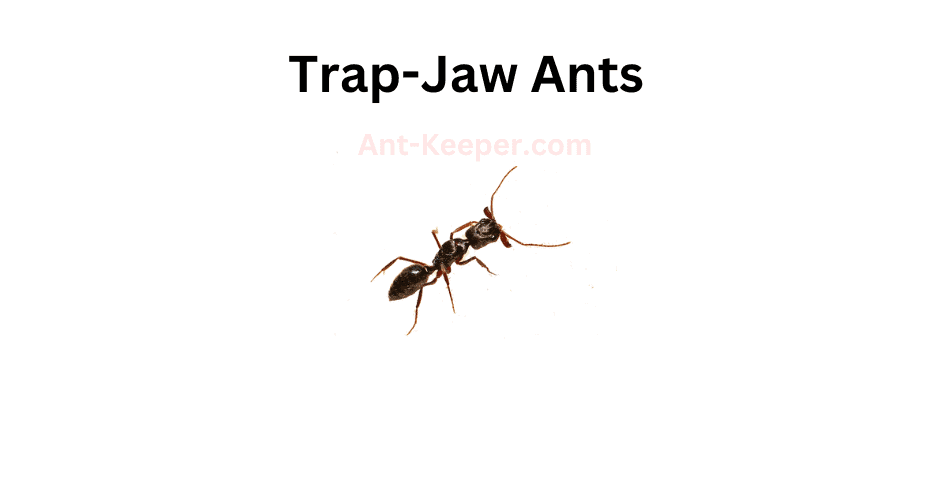
Trap-jaw ants are a species of ants that belong to the genus Odontomachus.
These ants are known for their unique and powerful mandibles, which they use to capture prey and defend their colonies.
The mandibles of trap-jaw ants are capable of closing at incredible speeds, reaching up to 140 miles per hour.
This allows them to snap their jaws shut with incredible force, which can stun or kill their prey.
Trap-jaw ants are found in a variety of habitats, including forests, grasslands, and deserts.
They are typically active during the day and are known to be highly territorial.
These ants are also known for their ability to jump, which they use to escape danger or to capture prey.
Trap-jaw ants are omnivorous, meaning that they eat both plant and animal matter.
They are known to feed on a variety of insects, including other ants, as well as nectar and other sweet substances.
These ants are also known to be scavengers, feeding on dead insects and other organic matter.
The colonies of trap-jaw ants are typically small, with only a few hundred individuals.
However, they are highly organized and have a strict social hierarchy.
The queen is the largest member of the colony and is responsible for laying eggs.
The workers, which are all female, are responsible for foraging, caring for the young, and defending the colony.
Overall, trap-jaw ants are fascinating creatures that have evolved unique adaptations to help them survive in their environments.
Their powerful mandibles and jumping abilities make them formidable predators, while their social organization allows them to work together to protect their colonies and ensure their survival.
7) Anoplolepis
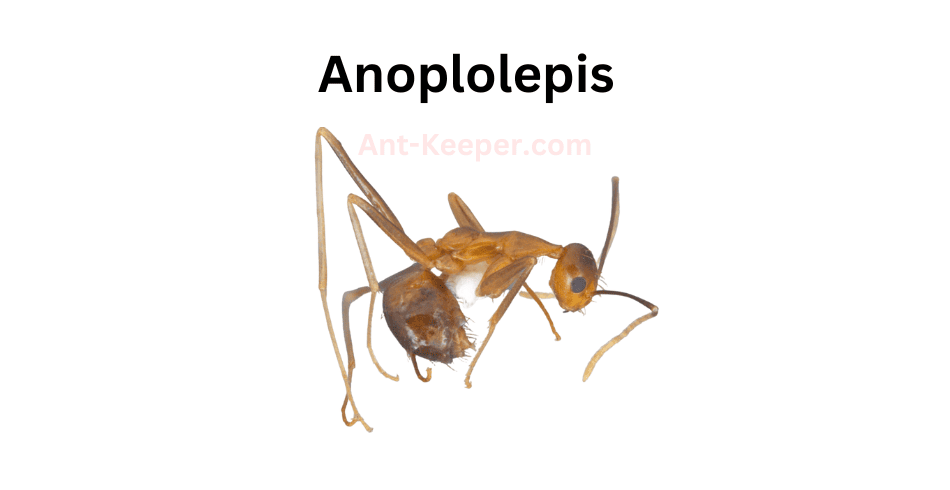
Anoplolepis is a genus of ants that belongs to the subfamily Formicinae.
The most well-known species in this genus is Anoplolepis gracilipes, commonly known as the yellow crazy ant.
These ants are known for their aggressive behavior and ability to form large colonies.
Anoplolepis ants are small in size, measuring between 2-3 mm in length.
They have a yellowish-brown coloration and a slender body shape.
Their mandibles are long and curved, which they use to capture prey and defend their colony.
These ants are omnivorous, feeding on a variety of food sources including insects, nectar, and honeydew.
They are also known to be attracted to sweet substances and can become a nuisance in households.
Anoplolepis ants are highly adaptable and can thrive in a variety of environments, including forests, grasslands, and urban areas.
They are known to form supercolonies, which can consist of millions of individuals.
These supercolonies can have a significant impact on the ecosystem, as they can displace native ant species and disrupt the balance of the food chain.
Overall, Anoplolepis ants are fascinating creatures with unique behaviors and adaptations.
While they can be a nuisance in households, they play an important role in the ecosystem and are an important subject of study for scientists.
8) Aphomomyrmex
Aphomomyrmex is a genus of ants belonging to the subfamily Myrmicinae.
These ants are known for their unique morphology, which includes a flattened head and a long, slender body.
The workers of Aphomomyrmex are small in size, measuring between 2-3 mm in length.
They are typically black or dark brown in color, with a shiny exoskeleton.
Aphomomyrmex ants are found in a variety of habitats, including forests, grasslands, and deserts.
They are known to be highly adaptable and can thrive in both wet and dry environments.
These ants are also known for their aggressive behavior, often attacking other ant species and even larger insects.
The diet of Aphomomyrmex ants consists mainly of small insects and other arthropods.
They are also known to feed on nectar and honeydew produced by aphids and other plant-sucking insects.
These ants are important members of their ecosystems, playing a key role in controlling insect populations and contributing to nutrient cycling.
Aphomomyrmex ants are social insects, living in colonies that can range in size from a few dozen to several hundred individuals.
The colonies are typically led by a single queen, who is responsible for laying eggs and maintaining the colony's social structure.
The workers of Aphomomyrmex are responsible for foraging, caring for the young, and defending the colony from predators.
Overall, Aphomomyrmex ants are fascinating creatures that play an important role in their ecosystems.
Their unique morphology, aggressive behavior, and social structure make them a fascinating subject of study for scientists and nature enthusiasts alike.
9) Apomyrma
Apomyrma is a genus of ants that belongs to the subfamily Amblyoponinae.
These ants are known for their unique morphology and behavior.
They have elongated mandibles that are used for capturing prey and defending their nests.
The workers of Apomyrma are blind and have reduced eyes, which suggests that they rely on other senses to navigate their environment.
Apomyrma ants are found in tropical regions and are often associated with leaf litter and soil.
They are known to be predators of other insects and arthropods, and have been observed hunting in groups.
The colonies of Apomyrma are small, with only a few dozen individuals, and are often found in underground nests.
One of the most interesting aspects of Apomyrma ants is their reproductive strategy.
The queen ants are wingless and do not leave the nest to mate.
Instead, they mate with their own sons, a behavior known as "broodmate mating." This unusual reproductive strategy is thought to have evolved as a way to maintain genetic diversity within the colony.
Overall, Apomyrma ants are fascinating creatures that have evolved unique adaptations to survive in their environment.
Their behavior and morphology make them a subject of interest for researchers studying the evolution of social insects.
10) Atopomyrmex
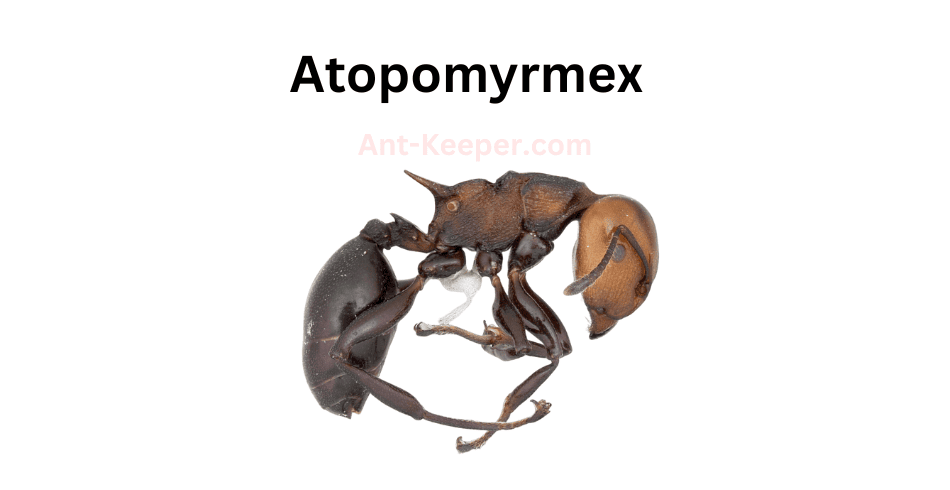
Atopomyrmexbe is a species of ant that belongs to the family Formicidae.
These ants are known for their unique physical characteristics, including their elongated mandibles and slender bodies.
Atopomyrmexbe ants are typically found in forested areas and are known to be arboreal, meaning they live in trees.
These ants are social insects and live in colonies that can range in size from a few dozen to several hundred individuals.
The colonies are typically led by a queen ant, who is responsible for laying eggs and maintaining the overall health of the colony.
Atopomyrmexbe ants are omnivores and feed on a variety of food sources, including insects, nectar, and plant sap.
They are also known to engage in mutualistic relationships with other insects, such as aphids, which provide them with a source of honeydew in exchange for protection.
Despite their small size, Atopomyrmexbe ants play an important role in their ecosystem.
They help to control the populations of other insects and contribute to the overall health of the forest ecosystem.
11) Axinidris
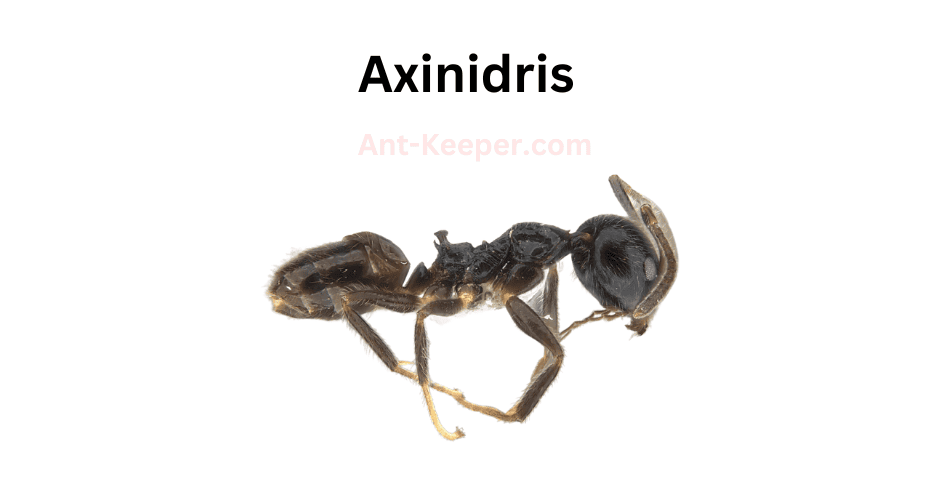
Axinidris is a genus of ants that belongs to the subfamily Dolichoderinae.
The ants in this genus are small in size, measuring between 2-3 mm in length.
They are typically black or dark brown in color, with a shiny and smooth exoskeleton.
Axinidris ants are known for their aggressive behavior towards other ant species.
They are often found in forests and woodlands, where they build their nests in soil or under rocks.
These ants are omnivorous, feeding on a variety of food sources including insects, nectar, and honeydew.
One unique characteristic of Axinidris ants is their ability to produce formic acid as a defense mechanism.
When threatened, they will release this acid from their mandibular glands, which can cause irritation and pain to predators.
The reproductive system of Axinidris ants is also interesting.
The queen ant is responsible for laying eggs, which hatch into larvae that are fed by worker ants.
Once the larvae reach maturity, they will develop into either male or female ants.
The males are typically smaller in size and have wings, while the females are larger and wingless.
Overall, Axinidris ants are fascinating creatures with unique characteristics and behaviors.
Their aggressive nature and ability to produce formic acid make them a formidable opponent to other ant species, while their reproductive system adds to their complexity and diversity.
12) Baracidris
Baracidrisbe is a species of ant that belongs to the family Formicidae.
These ants are small in size, measuring only a few millimeters in length.
They are known for their distinctive appearance, which includes a dark brown or black body with a shiny, smooth surface.
Baracidrisbe ants are typically found in forested areas, where they live in small colonies.
They are known to be highly social insects, with a complex social structure that includes a queen, workers, and soldiers.
The queen is responsible for laying eggs, while the workers and soldiers are responsible for maintaining the colony and protecting it from predators.
One of the most interesting aspects of Baracidrisbe ants is their diet.
These ants are omnivores, which means that they eat both plant and animal matter.
They are known to feed on a variety of foods, including insects, fruits, and seeds.
Despite their small size, Baracidrisbe ants play an important role in their ecosystem.
They help to control the populations of other insects, and they also help to disperse seeds and pollinate plants.
In addition, they are an important food source for many other animals, including birds and mammals.
Overall, Baracidrisbe ants are fascinating creatures that are well adapted to their environment.
They are an important part of the natural world, and they play a vital role in maintaining the balance of their ecosystem.
13) Bondroitia
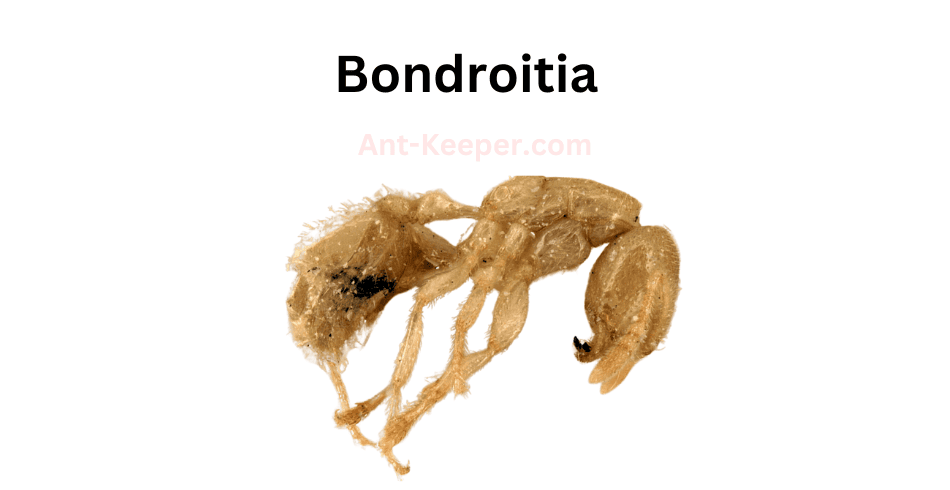
Bondroitiabe is a fascinating species of ant that belongs to the Formicidae family.
These ants are known for their unique physical characteristics and social behavior.
They are small in size, measuring only a few millimeters in length, and have a dark brown or black coloration.
One of the most interesting features of Bondroitiabe ants is their ability to form large colonies.
These colonies can consist of thousands of individuals, and each ant has a specific role to play in the community.
Some ants are responsible for gathering food, while others take care of the young or defend the colony from predators.
Bondroitiabe ants are also known for their aggressive behavior.
They are not afraid to defend their colony, and will attack any intruders that come too close.
This makes them a formidable opponent for other insects and animals in their environment.
In addition to their social behavior, Bondroitiabe ants are also fascinating from a scientific perspective.
Researchers have studied these ants to better understand their communication methods, which involve the use of pheromones and other chemical signals.
Overall, Bondroitiabe ants are a remarkable species that continue to intrigue scientists and nature enthusiasts alike.
Their unique physical characteristics and social behavior make them a fascinating subject for further study and observation.
14) Bothroponera
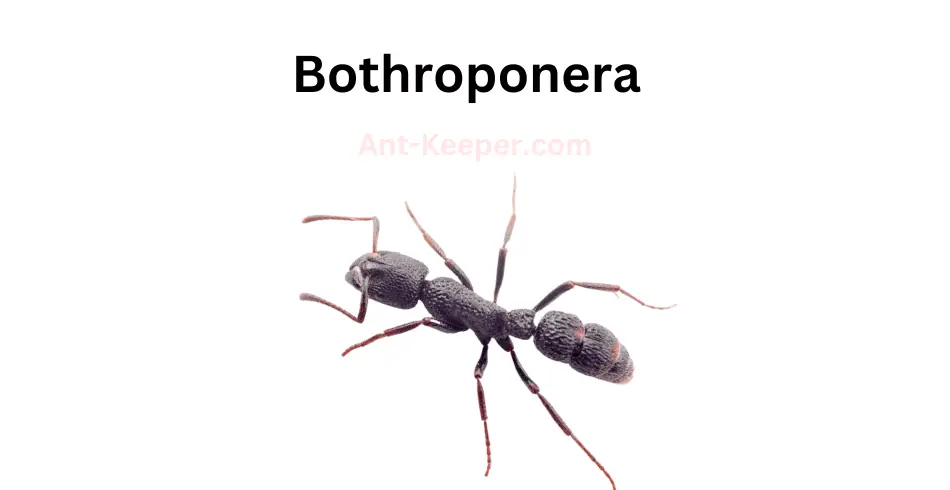
The Bothroponera ant is a fascinating species that belongs to the Ponerinae subfamily.
These ants are known for their aggressive behavior and powerful mandibles, which they use to capture prey and defend their colonies.
The Bothroponera ant is a medium-sized ant, with workers measuring between 6 and 10 millimeters in length.
They have a dark brown or black coloration, with a shiny exoskeleton that is covered in fine hairs.
Their mandibles are long and curved, and are used to subdue prey and defend the colony.
Bothroponera ants are found in a variety of habitats, including forests, grasslands, and deserts.
They are known to be active hunters, and will prey on a wide range of insects and other arthropods.
They are also known to scavenge for food, and will consume dead animals and other organic matter.
One of the most interesting aspects of Bothroponera ants is their social behavior.
They live in large colonies, which can contain thousands of individuals.
The colony is typically led by a queen, who is responsible for laying eggs and producing new workers.
The workers are divided into different castes, with some individuals specializing in foraging, while others are responsible for caring for the young.
Overall, the Bothroponera ant is a fascinating and important species that plays a crucial role in many ecosystems.
Their aggressive behavior and hunting skills make them a formidable predator, while their social behavior and division of labor allow them to thrive in large colonies.
15) Brachyponera
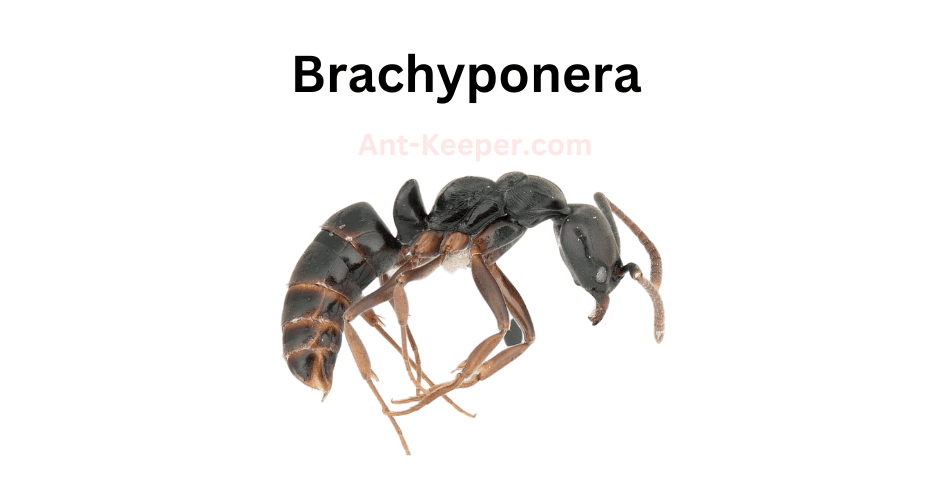
Brachyponera is a genus of ants belonging to the subfamily Ponerinae.
One of the species in this genus is Brachyponera sennaarensis, commonly known as the Sennaar ant.
These ants are relatively large, measuring up to 12mm in length, and are known for their aggressive behavior.
The workers of Brachyponera sennaarensis are dark brown in color and have a shiny exoskeleton.
They have a powerful sting and are known to attack other insects and even small vertebrates.
These ants are also known to forage for food in large groups, and can quickly overwhelm their prey.
Brachyponera sennaarensis is found in a variety of habitats, including forests, grasslands, and deserts.
They are known to build their nests in soil, under rocks, and in tree trunks.
These ants are also known to be nocturnal, and are most active during the night.
Despite their aggressive behavior, Brachyponera sennaarensis is an important part of the ecosystem.
They help to control the population of other insects and play a vital role in the food chain.
However, their powerful sting and aggressive behavior make them a potential danger to humans and other animals.
16) Calyptomyrmex
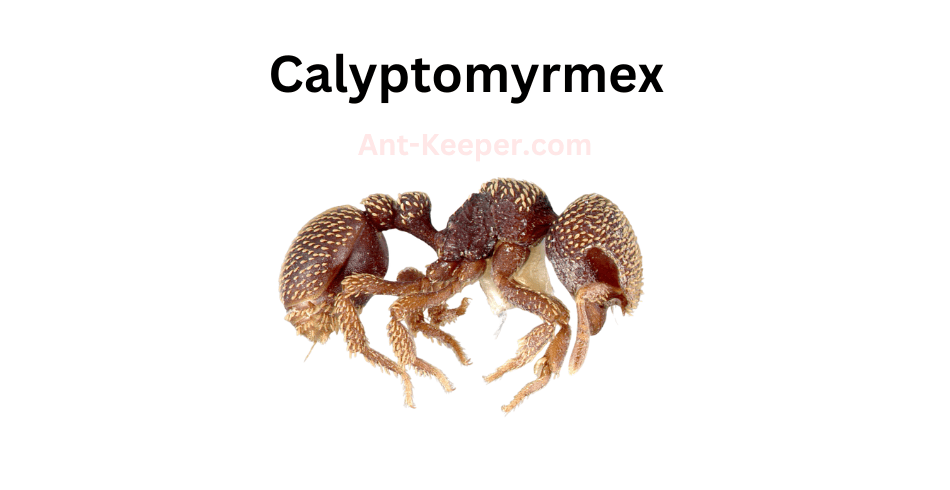
Calyptomyrmex is a genus of ants belonging to the subfamily Myrmicinae.
These ants are known for their unique morphology, which includes a distinctively shaped head and a flattened, shield-like structure on the thorax.
The genus is relatively small, with only a few known species.
Calyptomyrmex ants are typically found in forested areas, where they nest in soil or leaf litter.
They are known to be predatory, feeding on other insects and small invertebrates.
These ants are also known to have a mutualistic relationship with certain species of plants, where they protect the plants from herbivores in exchange for food and shelter.
One of the most interesting aspects of Calyptomyrmex ants is their social behavior.
These ants are highly organized, with a clear division of labor among the members of the colony.
The queen is responsible for laying eggs, while the workers are responsible for foraging, caring for the young, and defending the colony.
Overall, Calyptomyrmex ants are fascinating creatures that play an important role in their ecosystems.
Their unique morphology, predatory behavior, and social organization make them a subject of interest for researchers and nature enthusiasts alike.
17) Carpenter And Sugar Ants, Camponotus

Carpenter ants and sugar ants are two common species of ants found in many regions of the world.
Carpenter ants are known for their ability to excavate wood and create nests within it.
They are typically larger in size than sugar ants and have a black or dark brown coloration.
Carpenter ants are also known for their strong mandibles, which they use to chew through wood and other materials.
Sugar ants, on the other hand, are smaller in size and have a yellow or brown coloration.
They are named for their preference for sugary foods and are often found in kitchens and other areas where food is stored.
Sugar ants are also known for their ability to form large colonies, with thousands of individual ants working together to gather food and care for their young.
Both carpenter ants and sugar ants play important roles in their ecosystems.
Carpenter ants help to break down dead wood and other plant material, which helps to recycle nutrients back into the soil.
Sugar ants help to disperse seeds and pollinate plants, which helps to maintain healthy ecosystems.
However, both species can also be pests when they invade human homes and buildings.
Carpenter ants can cause damage to wooden structures, while sugar ants can contaminate food and be a nuisance to homeowners.
It is important to take steps to prevent ant infestations and to control them if they do occur, in order to protect both human health and the health of the environment.
18) Sneaking Ants, Cardiocondyla
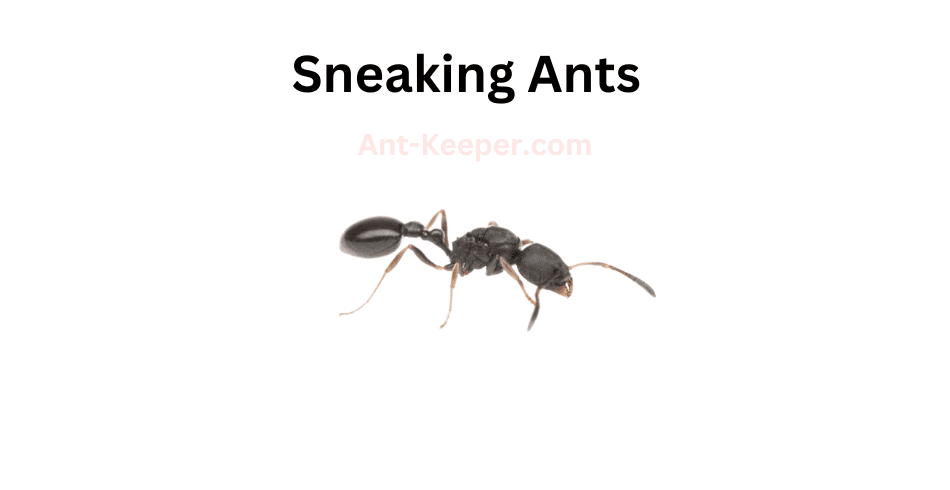
Sneaking Ants, also known as Camponotus obscuripes, are a species of ant that are commonly found in forested areas.
These ants are known for their ability to move quietly and quickly, making them difficult to detect.
Sneaking Ants are typically black or dark brown in color and range in size from 5 to 12 millimeters in length.
They have a distinctive, flattened head and a narrow waist, which helps them to navigate through tight spaces.
One of the most interesting aspects of Sneaking Ants is their behavior.
These ants are known for their ability to sneak up on other insects and steal their food.
They are also known to raid the nests of other ant species, taking their eggs and larvae back to their own colony to raise as their own.
Sneaking Ants are omnivorous, meaning they eat both plant and animal matter.
They have been observed feeding on nectar, honeydew, and small insects.
They are also known to scavenge for food, often taking advantage of the leftovers from other insects.
In terms of reproduction, Sneaking Ants have a unique system.
The colony is typically led by a single queen, who is responsible for laying eggs.
However, there are also a number of worker ants who are capable of laying eggs as well.
These eggs are typically unfertilized and produce male ants, which are used for mating purposes.
Overall, Sneaking Ants are a fascinating species with unique behaviors and adaptations.
Their ability to move quietly and quickly makes them a formidable predator, and their omnivorous diet allows them to thrive in a variety of environments.
19) Marauder Ants, Carebara
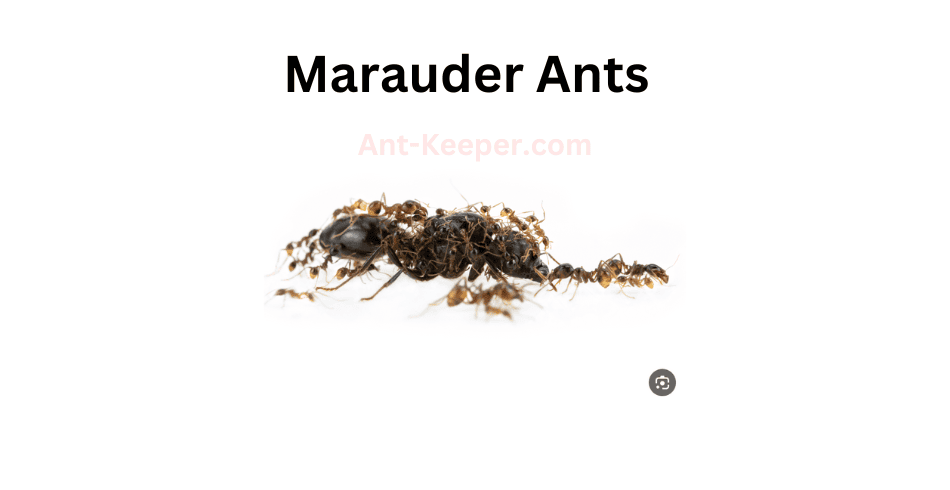
Marauder ants are a species of ants known for their aggressive behavior and large colony sizes.
They are typically found in tropical and subtropical regions, where they inhabit a variety of habitats including forests, grasslands, and urban areas.
These ants are known for their ability to raid other ant colonies and steal their resources, including food and brood.
They have powerful mandibles that allow them to overpower other ants and carry their prey back to their own colony.
Marauder ants are also known for their ability to adapt to changing environments.
They can quickly adjust their foraging patterns and nesting sites in response to changes in their surroundings, allowing them to thrive in a variety of habitats.
Despite their aggressive behavior, marauder ants play an important role in their ecosystems.
They help to control populations of other insects and contribute to nutrient cycling in the soil.
Overall, marauder ants are a fascinating species of ants that have adapted to thrive in a variety of environments.
Their aggressive behavior and large colony sizes make them a formidable force in the ant world.
20) Sahara Ants, Cataglyphis
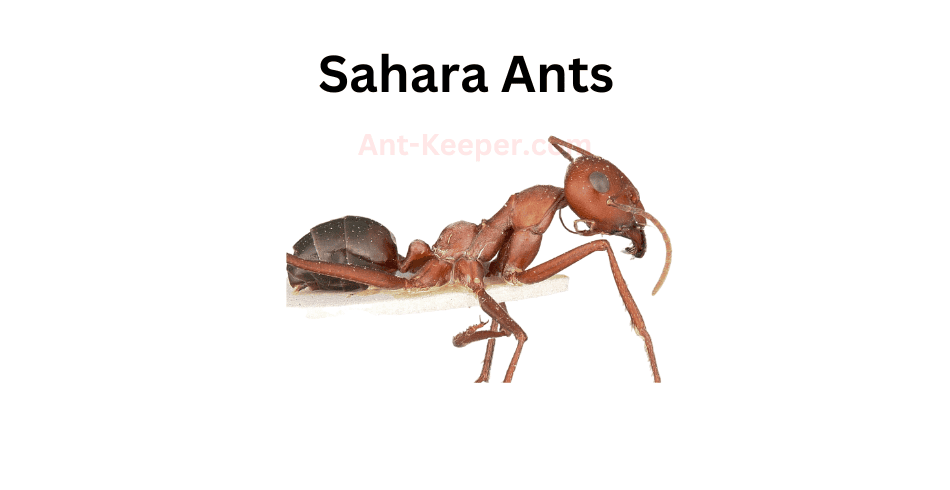
The Sahara Ant, also known as Cataglyphis bicolor, is a species of ant that is found in arid regions.
These ants are known for their remarkable ability to navigate through the harsh desert environment, using the sun's position and polarized light to find their way back to their nests.
Sahara Ants are small in size, measuring only a few millimeters in length.
They have a reddish-brown coloration and are covered in fine hairs that help them to retain moisture in the dry desert environment.
These ants are also known for their long legs, which allow them to move quickly across the sand.
One of the most interesting features of the Sahara Ant is its ability to withstand extreme temperatures.
These ants are able to survive in temperatures that can reach up to 70°C (158°F) by regulating their body temperature and behavior.
They will often move in and out of the shade to avoid overheating and will also reduce their activity during the hottest parts of the day.
Sahara Ants are also known for their unique foraging behavior.
They will often travel long distances from their nest in search of food, sometimes covering up to 50 meters in a single trip.
These ants are able to carry food that is up to three times their own body weight, using their strong mandibles to grip and transport the food back to their nest.
Overall, the Sahara Ant is a fascinating species that has adapted to survive in one of the harshest environments on Earth.
Their ability to navigate, withstand extreme temperatures, and forage for food make them a remarkable example of the resilience and adaptability of nature.
21) Cataulacus
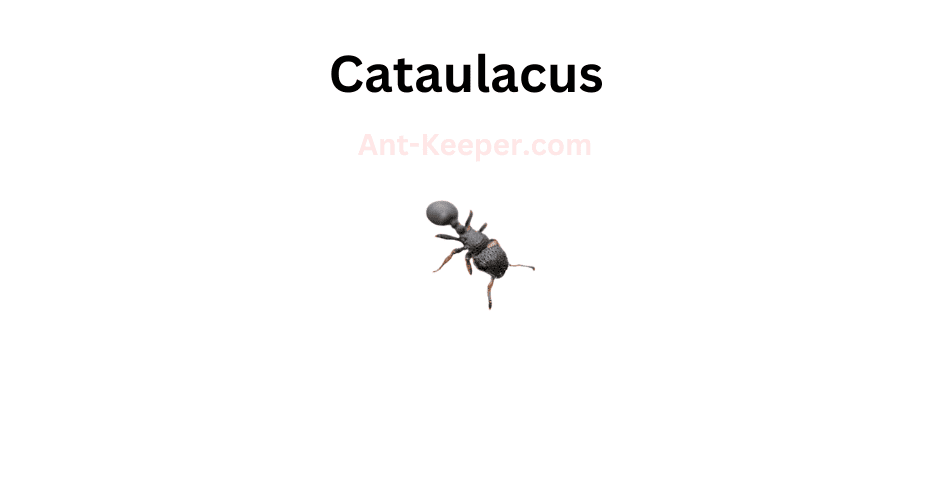
Cataulacus is a genus of ants that belongs to the family Formicidae.
These ants are known for their unique morphology and behavior.
They are small in size, measuring between 2 and 10 millimeters in length.
Cataulacus ants have a slender body with a narrow waist and long legs.
Their antennae are also long and thin, with 12 segments.
Cataulacus ants are primarily arboreal, meaning they live in trees and other vegetation.
They build their nests in hollow twigs, branches, and leaves.
These ants are also known for their ability to camouflage themselves by covering their bodies with debris and plant material.
Cataulacus ants are omnivorous, meaning they eat both plant and animal matter.
They feed on nectar, honeydew, and other sugary substances, as well as insects and other small invertebrates.
These ants are also known to tend to aphids and other insects that produce honeydew.
Cataulacus ants are social insects, living in colonies that can range in size from a few dozen to several hundred individuals.
The colony is typically led by a queen, who is responsible for laying eggs.
The workers, which are sterile females, are responsible for foraging, caring for the young, and defending the colony.
Overall, Cataulacus ants are fascinating creatures that play an important role in their ecosystem.
Their unique morphology and behavior make them a subject of interest for scientists and nature enthusiasts alike.
22) Centromyrmex
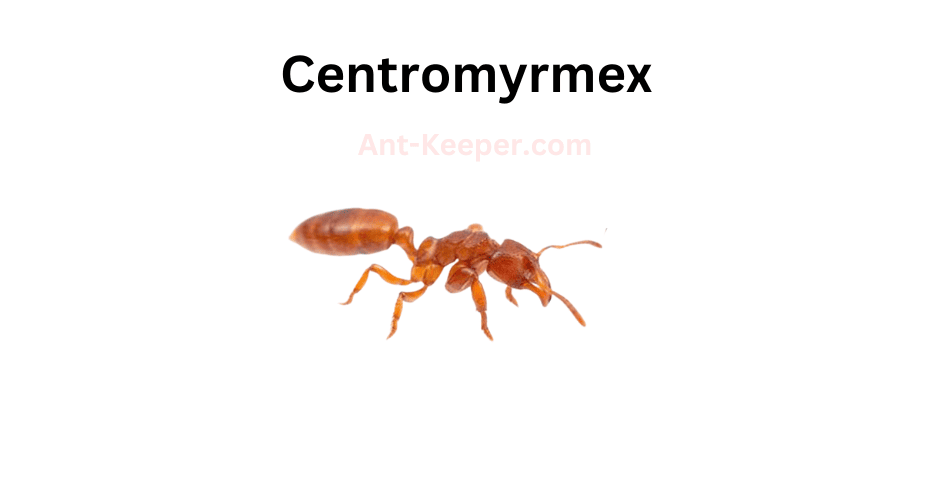
Centromyrmex is a genus of ants that belongs to the family Formicidae.
These ants are known for their unique morphology and behavior.
They are typically found in tropical regions and are known to inhabit forested areas.
Centromyrmex ants are characterized by their large size and elongated mandibles.
They are also known for their aggressive behavior and are often seen engaging in territorial disputes with other ant species.
These ants are primarily carnivorous and feed on other insects and small invertebrates.
One of the most interesting aspects of Centromyrmex ants is their reproductive behavior.
These ants are known to engage in a behavior called "pleometrosis," which involves multiple queens coexisting within a single colony.
This behavior is rare among ants and is thought to be an adaptation to the harsh conditions of their environment.
Overall, Centromyrmex ants are a fascinating and unique species that continue to intrigue scientists and researchers around the world.
Their behavior and morphology provide valuable insights into the evolution and adaptation of ants in tropical ecosystems.
23) Army Ants, Cerapachys
Army ants are a type of ant that belong to the subfamily Dorylinae.
They are known for their aggressive behavior and their ability to form large colonies that can contain up to several million individuals.
Army ants are found in tropical and subtropical regions around the world, and they play an important role in the ecosystems where they live.
One of the most distinctive features of army ants is their nomadic lifestyle.
Unlike other ants that build permanent nests, army ants are constantly on the move, searching for food and new nesting sites.
They are also known for their impressive hunting skills.
When they come across prey, they swarm over it in large numbers, overwhelming it with their sheer numbers and powerful jaws.
Army ants are also social insects, with a complex hierarchy that determines the roles of each individual in the colony.
The queen is the largest ant in the colony and is responsible for laying eggs.
The workers are responsible for foraging, caring for the young, and defending the colony.
The soldiers are larger and have stronger jaws, which they use to protect the colony from predators.
Despite their aggressive behavior, army ants are an important part of many ecosystems.
They help to control the populations of other insects and small animals, and they provide food for larger predators such as birds and mammals.
In some cultures, army ants are even used as a source of food for humans.
Overall, army ants are fascinating creatures that have adapted to life in some of the most challenging environments on Earth.
Their nomadic lifestyle, impressive hunting skills, and complex social structure make them one of the most interesting species of ants in the world.
24) Concoctio
Concoctiobe is a fascinating species of ant that belongs to the Formicidae family.
These ants are known for their unique physical characteristics and behavior, which make them stand out from other ant species.
One of the most notable features of Concoctiobe ants is their size.
They are relatively small, measuring only a few millimeters in length.
However, what they lack in size, they make up for in their impressive strength.
These ants are capable of carrying objects that are several times their own weight, making them an essential part of their ecosystem.
Concoctiobe ants are also known for their social behavior.
They live in large colonies that can consist of thousands of individuals.
Each colony has a queen ant that is responsible for laying eggs and maintaining the colony's population.
The other ants in the colony work together to gather food, care for the young, and protect the colony from predators.
One of the most interesting aspects of Concoctiobe ants is their ability to communicate with each other.
They use a variety of methods to communicate, including chemical signals, touch, and sound.
These communication methods allow the ants to work together effectively and efficiently, ensuring the survival of the colony.
Overall, Concoctiobe ants are a fascinating species that play an important role in their ecosystem.
Their unique physical characteristics and social behavior make them a valuable subject of study for scientists and researchers around the world.
25) Acrobat Ants, Crematogaster

Acrobat ants, also known as Crematogaster spp., are a genus of ants that are found in various parts of the world.
These ants are known for their unique ability to contort their bodies and move in acrobatic ways, hence their name.
Acrobat ants are relatively small, with workers measuring between 2-5mm in length.
They are typically brown or black in color, with a slender body and long legs.
These ants are known for their aggressive behavior and will readily defend their nests against intruders.
One of the most interesting features of acrobat ants is their ability to use their mandibles to grip onto surfaces and contort their bodies in unusual ways.
This allows them to move along narrow branches, twigs, and other surfaces that would be difficult for other ants to navigate.
They are also able to use this ability to escape from predators, such as birds and other insects.
Acrobat ants are omnivorous, meaning that they will eat both plant and animal matter.
They are known to feed on insects, nectar, and honeydew, as well as fruits and seeds.
These ants are also known to tend to aphids, protecting them from predators in exchange for the sweet honeydew that the aphids produce.
In terms of their social structure, acrobat ants are typically organized into colonies that are led by a queen.
The queen is responsible for laying eggs, while the workers are responsible for foraging, caring for the young, and defending the nest.
Overall, acrobat ants are fascinating creatures that have adapted unique abilities to survive in their environments.
Their acrobatic abilities and aggressive behavior make them a formidable force in the insect world.
26) Cryptic Ants, Cryptopone
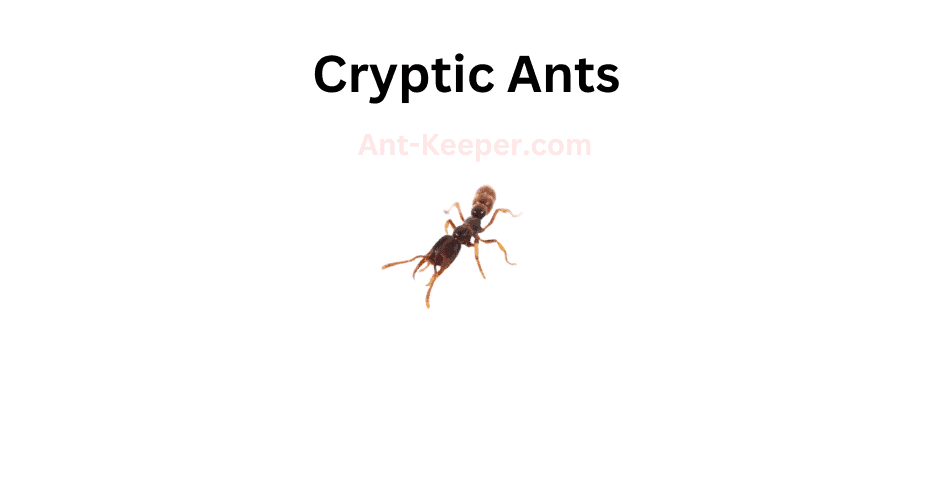
Cryptic ants are a species of ants that are known for their ability to blend in with their surroundings.
They are typically small in size, measuring only a few millimeters in length, and have a dark brown or black coloration that helps them to remain inconspicuous.
One of the most interesting features of cryptic ants is their ability to mimic the appearance of other insects.
For example, some species of cryptic ants have been observed mimicking the appearance of spiders, which helps them to avoid detection by predators that might otherwise prey on them.
Cryptic ants are also known for their highly social behavior.
They live in large colonies that can contain thousands of individuals, and they work together to gather food, care for their young, and defend their territory from other ants and predators.
Despite their small size, cryptic ants play an important role in their ecosystem.
They help to aerate the soil, control pest populations, and provide food for other animals.
In addition, they are an important food source for many birds and other predators.
Overall, cryptic ants are a fascinating species of ants that have evolved a number of unique adaptations to help them survive in their environment.
Their ability to blend in with their surroundings and mimic other insects is just one example of the many ways in which they have adapted to their surroundings over time.
27) Cyphoidris
Cyphoidrisbe is a species of ant that belongs to the Formicidae family.
These ants are known for their unique physical characteristics, including their elongated and slender bodies, which are covered in fine hairs.
They are typically dark brown or black in color and have large mandibles that they use to capture prey.
Cyphoidrisbe ants are found in a variety of habitats, including forests, grasslands, and deserts.
They are known to be highly adaptable and can thrive in both wet and dry environments.
These ants are also known for their aggressive behavior and will defend their colonies fiercely against any perceived threats.
One of the most interesting aspects of Cyphoidrisbe ants is their social structure.
They live in large colonies that can contain thousands of individuals, and each colony is led by a queen ant.
The queen is responsible for laying eggs, which hatch into larvae and eventually mature into adult ants.
Cyphoidrisbe ants are omnivorous and will eat a variety of foods, including insects, seeds, and nectar.
They are also known to engage in mutualistic relationships with other species, such as aphids, which they protect in exchange for a sugary substance called honeydew.
Overall, Cyphoidrisbe ants are fascinating creatures that play an important role in their ecosystems.
Their unique physical characteristics, aggressive behavior, and complex social structure make them a fascinating subject for study and observation.
28) Decamorium
Decamoriumbe is a species of ant that belongs to the family Formicidae.
These ants are small in size, measuring only a few millimeters in length.
They are known for their distinctive appearance, which includes a dark brown or black body and long, slender legs.
One of the most interesting features of Decamoriumbe ants is their social behavior.
They live in large colonies that can contain thousands of individuals.
Within these colonies, there is a strict hierarchy, with a queen ant at the top and various worker ants performing different tasks.
Worker ants are responsible for tasks such as foraging for food, caring for the young, and maintaining the nest.
They communicate with each other using a variety of chemical signals, including pheromones.
Despite their small size, Decamoriumbe ants are important members of their ecosystem.
They play a crucial role in controlling the populations of other insects and invertebrates, and they also help to aerate the soil and distribute seeds.
Overall, Decamoriumbe ants are fascinating creatures that have much to teach us about the complexities of social behavior and the importance of small organisms in the natural world.
29) Dicroaspis
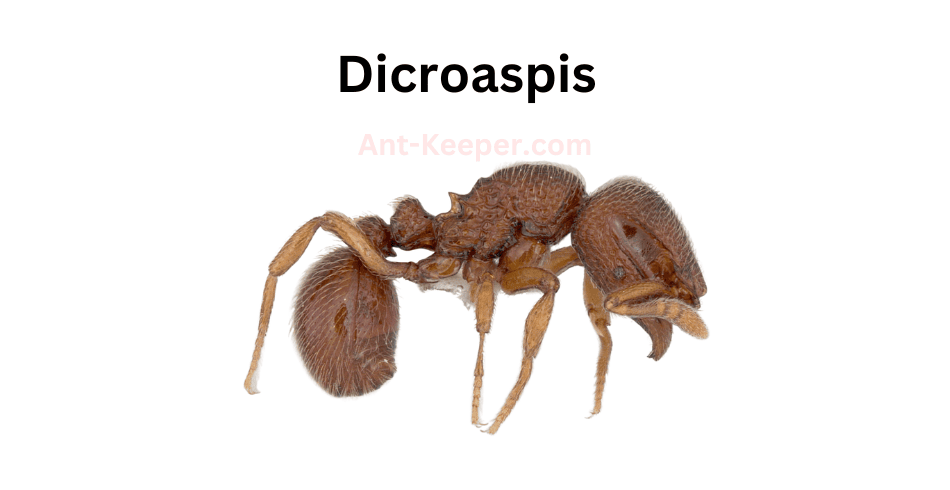
Dicroaspisbe is a species of ant that belongs to the family Formicidae.
These ants are known for their small size, measuring only a few millimeters in length.
They have a dark brown or black coloration and a slender body shape, which allows them to move quickly and easily through narrow spaces.
One of the most distinctive features of Dicroaspisbe ants is their ability to climb smooth surfaces.
They have specialized adhesive pads on their feet that allow them to cling to vertical or inverted surfaces, such as tree trunks or ceilings.
This adaptation helps them to navigate their environment and avoid predators.
Dicroaspisbe ants are social insects that live in colonies.
The colonies are typically small, with only a few dozen individuals, and are led by a queen.
The workers are responsible for foraging for food, caring for the young, and defending the colony from threats.
These ants are omnivorous, meaning they eat both plant and animal matter.
They feed on a variety of food sources, including nectar, honeydew, insects, and other small invertebrates.
Overall, Dicroaspisbe ants are fascinating creatures that have adapted to their environment in unique ways.
Their ability to climb smooth surfaces and their omnivorous diet make them an important part of their ecosystem.
30) Diplomorium
Diplomorium is a genus of ants that belongs to the family Formicidae.
These ants are known for their unique physical characteristics and social behavior.
Diplomorium ants are small in size, measuring between 2 and 4 millimeters in length.
They have a dark brown or black coloration and a slender body shape.
One of the most interesting features of Diplomorium ants is their social structure.
These ants live in colonies that are composed of several hundred individuals.
Within the colony, there is a clear division of labor, with different ants performing specific tasks.
For example, some ants are responsible for foraging for food, while others care for the young or defend the colony from predators.
Diplomorium ants are also known for their ability to communicate with one another.
They use a variety of chemical signals, such as pheromones, to convey information about food sources, danger, and other important factors.
This communication is essential for the survival of the colony, as it allows the ants to work together effectively.
Despite their small size, Diplomorium ants play an important role in their ecosystem.
They are known to be efficient predators, feeding on other insects and small invertebrates.
They also help to aerate the soil and distribute nutrients, which can benefit plant growth.
Overall, Diplomorium ants are fascinating creatures that offer a glimpse into the complex social behavior of insects.
Their unique physical characteristics and social structure make them a valuable subject of study for scientists and nature enthusiasts alike.
31) Discothyrea
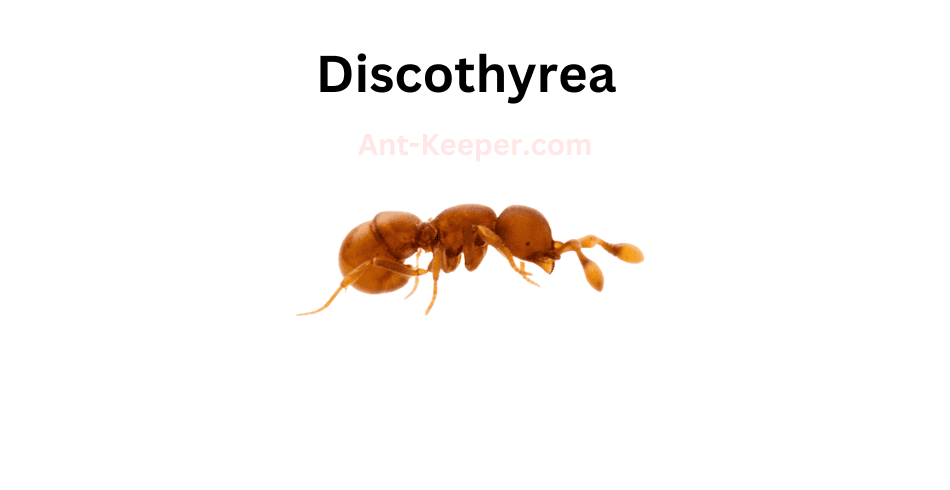
Discothyreabe is a species of ant that belongs to the Formicidae family.
These ants are known for their unique physical characteristics, including their elongated mandibles and slender bodies.
The workers of this species are typically around 3-4mm in length, while the queen can grow up to 7mm.
Discothyreabe ants are primarily found in forested areas, where they build their nests in soil or leaf litter.
They are known to be aggressive towards other ant species and will defend their territory fiercely.
These ants are also known to be nocturnal, which means they are most active during the night.
One of the most interesting aspects of Discothyreabe ants is their feeding habits.
They are known to be generalist feeders, which means they will eat a wide variety of foods.
They have been observed feeding on insects, nectar, and even carrion.
This adaptability allows them to thrive in a variety of environments.
Despite their small size, Discothyreabe ants play an important role in their ecosystem.
They help to control insect populations and contribute to soil health through their nest-building activities.
They are also an important food source for many other animals, including birds and small mammals.
Overall, Discothyreabe ants are a fascinating species that have adapted to thrive in a variety of environments.
Their unique physical characteristics and feeding habits make them an important part of their ecosystem.
32) Driver Ants, Dorylus
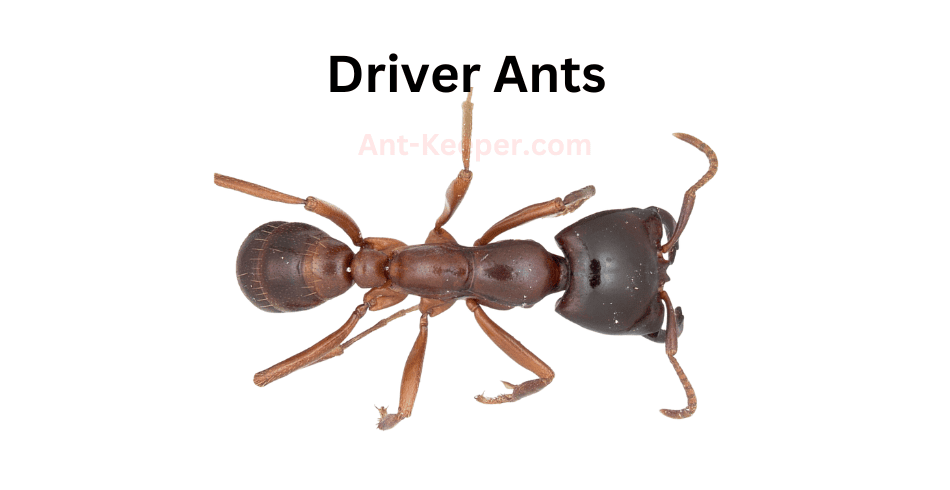
Driver ants, also known as army ants, are a group of highly social and nomadic ants belonging to the subfamily Dorylinae.
They are found in tropical regions around the world and are known for their aggressive behavior and large colony sizes.
Driver ants are typically black or brown in color and range in size from 2 to 15 millimeters in length.
They have powerful mandibles that they use to capture and kill prey, which can include insects, spiders, and even small vertebrates.
One of the most distinctive features of driver ants is their nomadic lifestyle.
Unlike many other ant species, driver ants do not build permanent nests.
Instead, they move their entire colony from place to place in search of food and suitable nesting sites.
This behavior is facilitated by the fact that driver ants have no fixed breeding season and can reproduce at any time of year.
Driver ants are also known for their highly organized social structure.
Each colony is led by a queen, who is responsible for laying eggs and producing new workers.
The workers are divided into different castes, with some specializing in foraging for food, while others are responsible for caring for the queen and her offspring.
Despite their aggressive behavior, driver ants play an important role in their ecosystem.
They help to control populations of other insects and can even help to aerate soil by digging tunnels as they move through the forest floor.
Overall, driver ants are a fascinating and important species that have adapted to thrive in some of the most challenging environments on Earth.
33) Ecphorella
Ecphorellabe is a species of ant that belongs to the Formicidae family.
These ants are known for their small size, measuring only a few millimeters in length.
They have a dark brown or black coloration and a slender body shape.
Ecphorellabe ants are typically found in forested areas, where they build their nests in soil or leaf litter.
They are known to be highly social insects, living in colonies that can contain thousands of individuals.
Within these colonies, there is a clear division of labor, with different ants performing specific tasks such as foraging for food, caring for the young, and defending the nest.
One interesting aspect of Ecphorellabe ants is their ability to communicate with each other using chemical signals.
They release pheromones that can convey information about food sources, danger, and the location of the nest.
This communication system allows the ants to work together effectively and respond quickly to changing conditions in their environment.
Despite their small size, Ecphorellabe ants play an important role in their ecosystem.
They are known to be efficient predators, feeding on other insects and small invertebrates.
They also help to aerate the soil and distribute nutrients, which can benefit plant growth.
Overall, Ecphorellabe ants are fascinating creatures that demonstrate the complexity and diversity of the natural world.
Their social behavior, communication systems, and ecological roles make them an important subject of study for scientists and nature enthusiasts alike.
34) Euponera
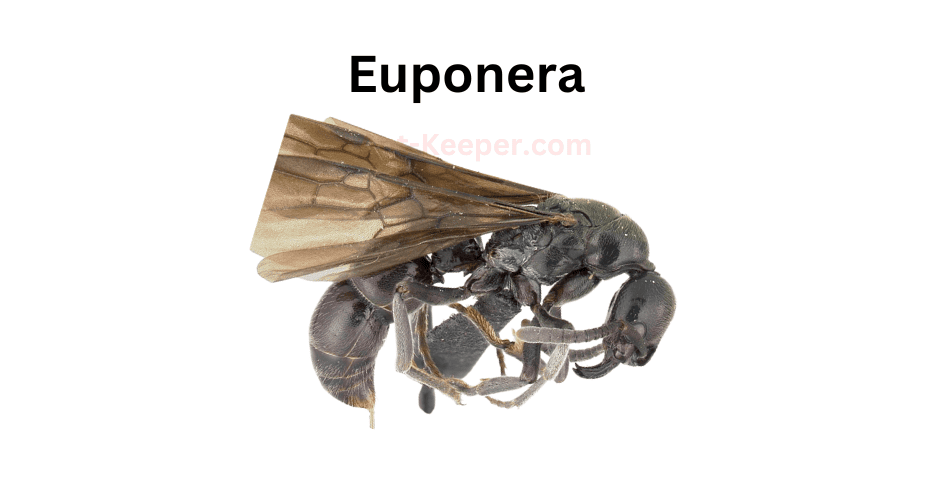
Euponerabe is a species of ant that belongs to the family of Formicidae.
These ants are known for their unique physical characteristics and behavior.
They are relatively small in size, measuring around 5-6 millimeters in length.
Their bodies are dark brown or black in color, and they have long, slender legs that allow them to move quickly and efficiently.
One of the most distinctive features of Euponerabe ants is their mandibles.
These ants have large, powerful mandibles that they use to capture prey and defend their colonies.
They are also known for their aggressive behavior, and will not hesitate to attack other ants or insects that they perceive as a threat.
Euponerabe ants are typically found in forested areas, where they build their nests in the soil or in decaying wood.
They are omnivorous, feeding on a variety of insects, fruits, and other plant materials.
They are also known to engage in trophallaxis, a behavior in which they exchange food and other nutrients with other members of their colony.
Despite their aggressive behavior, Euponerabe ants are not considered to be a major pest species.
They play an important role in their ecosystems, helping to control populations of other insects and contributing to the overall health of the forest.
They are also fascinating creatures to observe, with their unique physical characteristics and complex social behavior.
35) Crypt Ants, Hypoponera
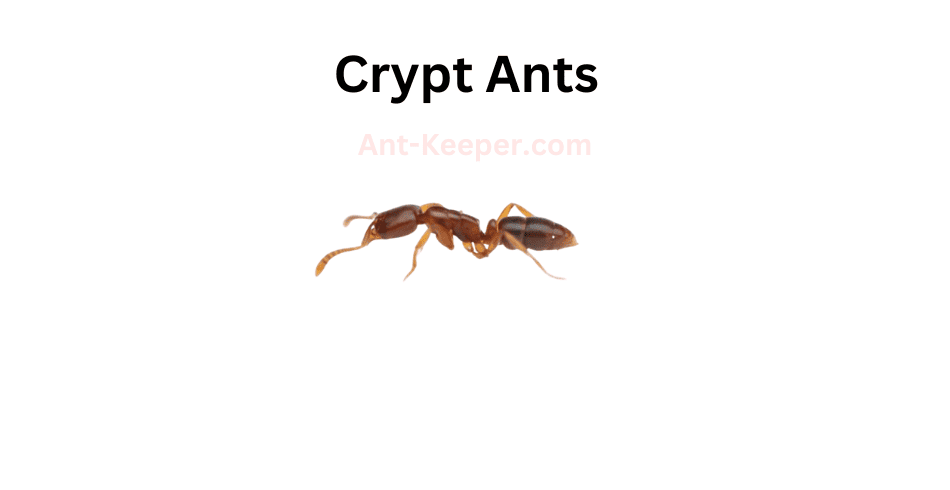
Crypt ants, also known as fungus-growing ants, are a group of ants that cultivate fungi for food.
They are found in various habitats, including forests, grasslands, and deserts.
Crypt ants are known for their unique nesting behavior, as they construct underground chambers to house their fungal gardens.
These ants have a symbiotic relationship with the fungi they cultivate.
The ants provide the fungi with a suitable environment for growth, while the fungi provide the ants with a source of food.
The ants also protect their fungal gardens from other insects and parasites.
Crypt ants are social insects, living in colonies that can range from a few dozen to several thousand individuals.
The colonies are organized into castes, with the queen being the largest and most important member.
The queen is responsible for laying eggs, while the workers are responsible for tending to the fungal gardens and caring for the young.
One interesting aspect of crypt ants is their ability to create "satellite" nests.
These nests are smaller chambers located near the main nest, and they serve as storage areas for food and as a place for the queen to lay eggs.
The satellite nests are connected to the main nest by underground tunnels, allowing the ants to move between them.
Overall, crypt ants are fascinating insects that have developed a unique way of obtaining food.
Their symbiotic relationship with fungi and their complex nesting behavior make them an important species to study in the field of entomology.
36) Lepisiota
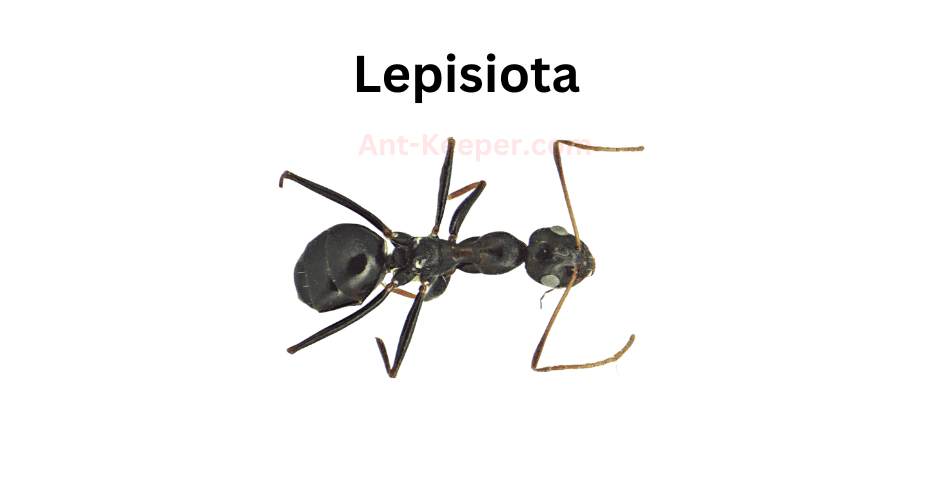
Lepisiota bidentata is a species of ant that belongs to the family Formicidae.
These ants are small in size, measuring only about 2-3 mm in length.
They are typically reddish-brown in color and have a slender body shape.
Lepisiota bidentata ants are known for their aggressive behavior towards other ant species.
They are often found in large colonies and are known to be highly territorial.
These ants are also known to be opportunistic feeders, consuming a wide variety of food sources including insects, seeds, and nectar.
One unique characteristic of Lepisiota bidentata ants is their ability to form satellite colonies.
These satellite colonies are smaller colonies that are established near the main colony and are connected by trails.
This allows the ants to expand their territory and increase their food sources.
Lepisiota bidentata ants are also known for their ability to adapt to different environments.
They are commonly found in urban areas, agricultural fields, and natural habitats.
This adaptability has allowed them to become a successful invasive species in some areas.
Overall, Lepisiota bidentata ants are a fascinating species with unique characteristics and behaviors.
Their aggressive nature and adaptability make them an important species to study in the field of entomology.
37) Leptanilla
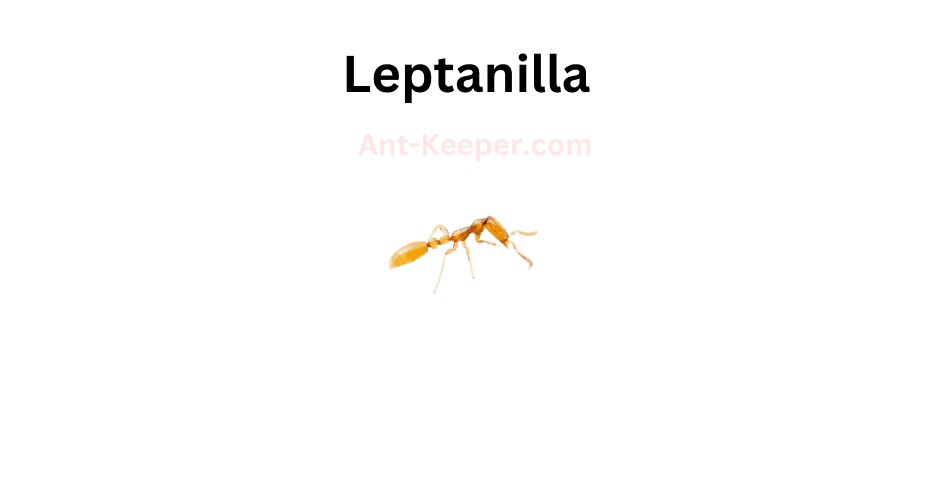
Leptanilla is a genus of ants that belongs to the subfamily Leptanillinae.
These ants are known for their small size and subterranean lifestyle.
They are typically found in tropical and subtropical regions, where they live in soil and leaf litter.
Leptanilla ants are unique in their morphology, with elongated bodies and long, slender legs.
They have small eyes and lack the ability to sting, relying instead on their powerful mandibles to defend themselves.
These ants are also known for their unusual behavior, with some species exhibiting a caste system where workers are divided into "major" and "minor" forms.
Despite their small size, Leptanilla ants play an important role in their ecosystems.
They are known to feed on small invertebrates and help to aerate soil through their burrowing activities.
Some species have also been observed engaging in mutualistic relationships with other insects, such as termites and beetles.
Due to their subterranean lifestyle, Leptanilla ants are not often encountered by humans.
However, they are of interest to researchers studying the evolution and behavior of social insects.
Their unique morphology and behavior make them a fascinating subject for scientific study.
38) Razorjaw Ants, Leptogenys
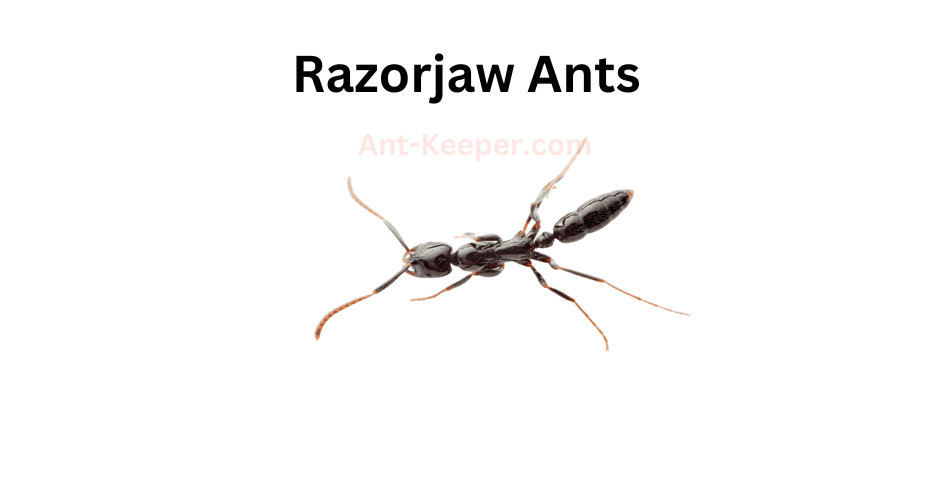
The Razorjaw Ant, also known as the Pachycondyla villosa, is a species of ant belonging to the subfamily Ponerinae.
These ants are known for their sharp mandibles, which are used for hunting and defense.
The workers of this species are typically around 8-10mm in length, while the queen can reach up to 15mm.
Razorjaw Ants are found in a variety of habitats, including forests, grasslands, and deserts.
They are known to be aggressive predators, feeding on a variety of insects and other arthropods.
These ants are also known to scavenge for food, and will even attack and kill other ant species to steal their food.
The nests of Razorjaw Ants are typically found in soil or leaf litter, and can be quite large.
The queen is responsible for laying eggs, and the workers are responsible for caring for the brood and maintaining the nest.
These ants are also known for their ability to defend their nest, and will aggressively attack any intruders.
Overall, the Razorjaw Ant is a fascinating species of ant known for its sharp mandibles, aggressive behavior, and impressive hunting skills.
39) Megaponera
Megaponerabe is a species of ant that belongs to the Ponerinae subfamily.
These ants are known for their large size and aggressive behavior, making them one of the most feared ant species in the world.
The workers of Megaponerabe can grow up to 2.5 centimeters in length, while the queen can reach up to 4 centimeters.
Megaponerabe ants are typically found in tropical and subtropical regions, where they build their nests in soil or under rocks.
They are known to be highly territorial and will fiercely defend their nests against any intruders.
Their mandibles are powerful and can deliver a painful bite, which is why they are often referred to as "bullet ants."
Despite their aggressive behavior, Megaponerabe ants play an important role in their ecosystem.
They are known to prey on other insects, including termites and other ant species, which helps to control their populations.
They also play a role in seed dispersal, as they are known to carry seeds back to their nests.
Megaponerabe ants have a complex social structure, with a queen who is responsible for laying eggs and workers who are responsible for foraging, nest maintenance, and defense.
The workers communicate with each other through chemical signals, which helps to coordinate their activities.
Overall, Megaponerabe ants are a fascinating species that have captured the attention of scientists and nature enthusiasts alike.
While they may be intimidating, they are an important part of their ecosystem and serve as a reminder of the incredible diversity of life on our planet.
40) Melissotarsus
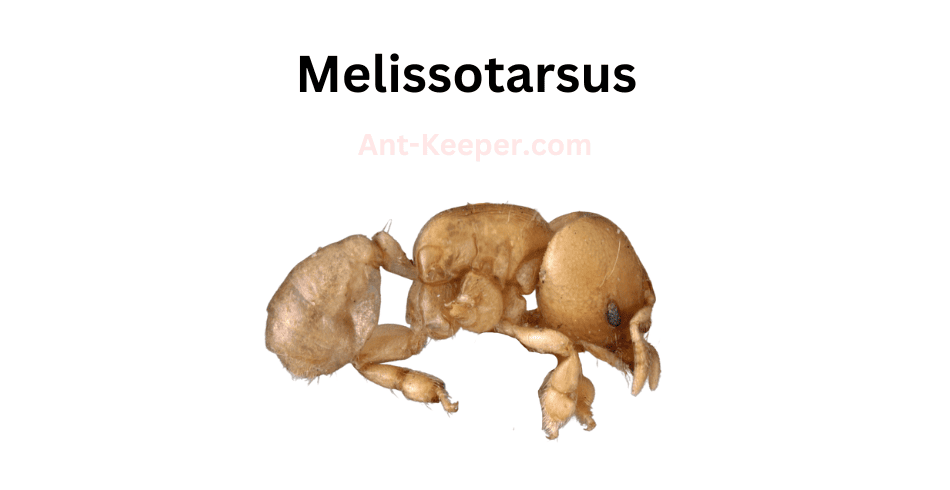
Melissotarsus is a genus of ants that belongs to the subfamily Myrmicinae.
The ants in this genus are small in size, measuring between 1.5 to 2.5 millimeters in length.
They are known for their unique morphology, particularly their enlarged hind tarsi, which are used for grooming and cleaning their antennae and other body parts.
Melissotarsus ants are found in tropical and subtropical regions, where they inhabit leaf litter and soil.
They are known to be arboreal, and can be found nesting in the hollow stems of plants or in the crevices of tree bark.
These ants are also known to be highly specialized, with each species having a specific host plant or animal that they rely on for survival.
One of the most interesting aspects of Melissotarsus ants is their symbiotic relationship with mealybugs.
Mealybugs are small insects that feed on plant sap, and are often found on the same host plants as Melissotarsus ants.
The ants protect the mealybugs from predators and parasites, and in return, the mealybugs provide the ants with a sugary secretion that they use as a food source.
Melissotarsus ants are also known for their aggressive behavior towards other ant species.
They have been observed attacking and killing other ants that come into their territory, and are known to be highly territorial.
Despite their small size, Melissotarsus ants are formidable predators, and play an important role in the ecosystem of their habitat.
41) Shield Ants, Meranoplus
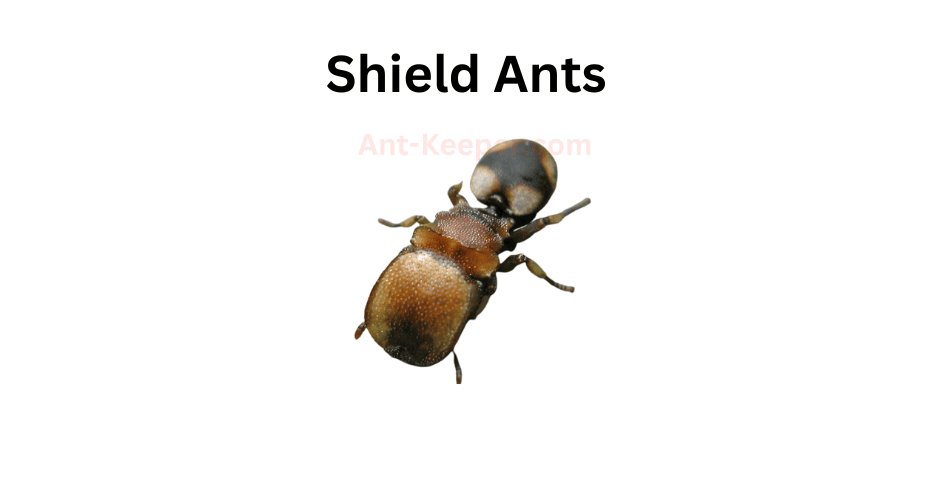
Shield ants, also known as turtle ants, are a species of ant that belong to the genus Cephalotes.
They are found in tropical regions and are known for their unique physical characteristics.
One of the most distinctive features of shield ants is their flattened, disc-shaped head.
This head shape allows them to block the entrance to their nests, protecting them from predators and other threats.
In addition, shield ants have long, spindly legs that allow them to move quickly and easily through the forest canopy.
Shield ants are social insects and live in large colonies.
They are known for their complex communication systems, which involve chemical signals and physical gestures.
They also have a division of labor within their colonies, with different ants taking on different roles such as foraging, nest building, and caring for the young.
One interesting behavior of shield ants is their use of "backpacks." Some worker ants will carry small pieces of leaves or other materials on their backs as they move through the forest.
It is believed that these backpacks may serve as camouflage or protection from predators.
Overall, shield ants are a fascinating species of ant with unique physical and behavioral adaptations that allow them to thrive in their tropical habitats.
42) Mesoponera
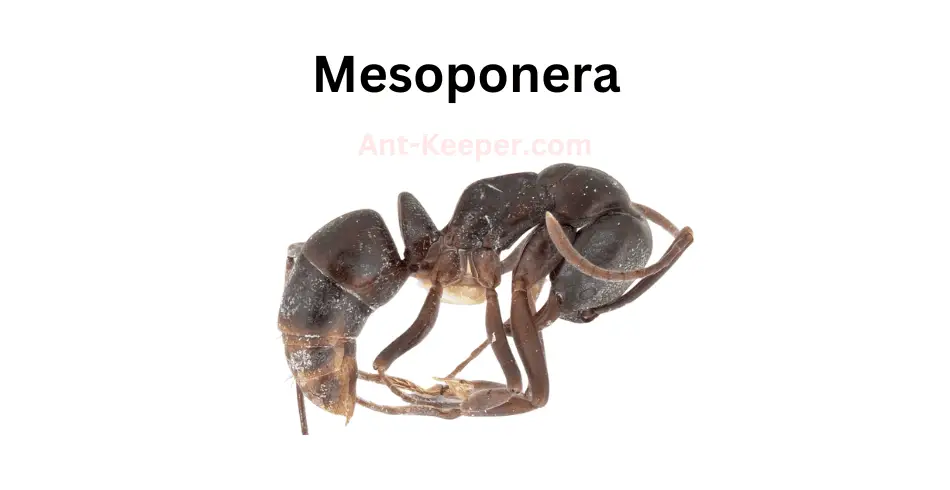
Mesoponera is a genus of ants belonging to the subfamily Ponerinae.
The species Mesoponera beccarii is a medium-sized ant with a dark brown to black coloration.
They are known for their aggressive behavior and are often found in forested areas.
Mesoponera beccarii is a solitary ant that lives in underground nests.
They are active during the day and forage for food on the forest floor.
Their diet consists of insects, spiders, and other small invertebrates.
The queen of Mesoponera beccarii is larger than the workers and is responsible for laying eggs.
The workers are responsible for caring for the brood, foraging for food, and defending the nest.
Mesoponera beccarii has a painful sting and is known to be aggressive towards intruders.
They are also known to engage in battles with other ant species over territory and resources.
Overall, Mesoponera beccarii is an interesting and important species in the ecosystem.
Their aggressive behavior and role in controlling insect populations make them an important part of the forest ecosystem.
43) Harvester Ants, Messor
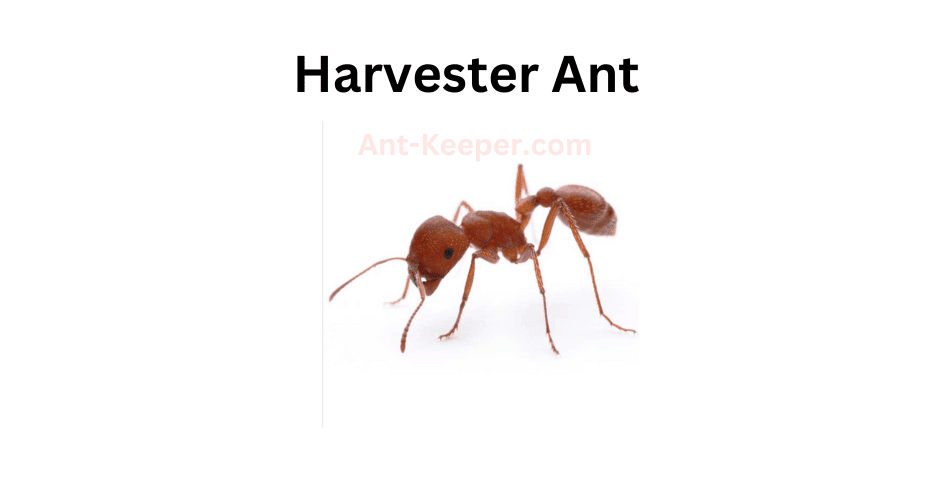
Harvester ants are a type of ant that belongs to the genus Pogonomyrmex.
They are known for their impressive ability to collect and store seeds, which they use as their primary source of food.
These ants are typically found in arid and semi-arid regions, where they play an important role in the ecosystem by dispersing seeds and aerating the soil.
Harvester ants are social insects that live in large colonies, which can contain thousands of individuals.
The colony is typically headed by a queen, who is responsible for laying eggs and maintaining the social structure of the colony.
The workers, which are all female, are responsible for foraging, nest maintenance, and caring for the young.
One of the most impressive features of harvester ants is their ability to navigate long distances to find food.
They use a combination of visual cues and chemical signals to locate and retrieve seeds, which they then bring back to the nest.
Once inside the nest, the seeds are stored in underground chambers, where they are protected from predators and other environmental factors.
Harvester ants are also known for their aggressive behavior, particularly when it comes to defending their nest and food sources.
They have powerful mandibles that they use to bite and sting potential threats, including humans.
As a result, it is important to exercise caution when encountering these ants in the wild.
Overall, harvester ants are fascinating creatures that play an important role in their ecosystem.
Their ability to collect and store seeds, navigate long distances, and defend their colony make them a formidable force in the world of insects.
44) Metapone
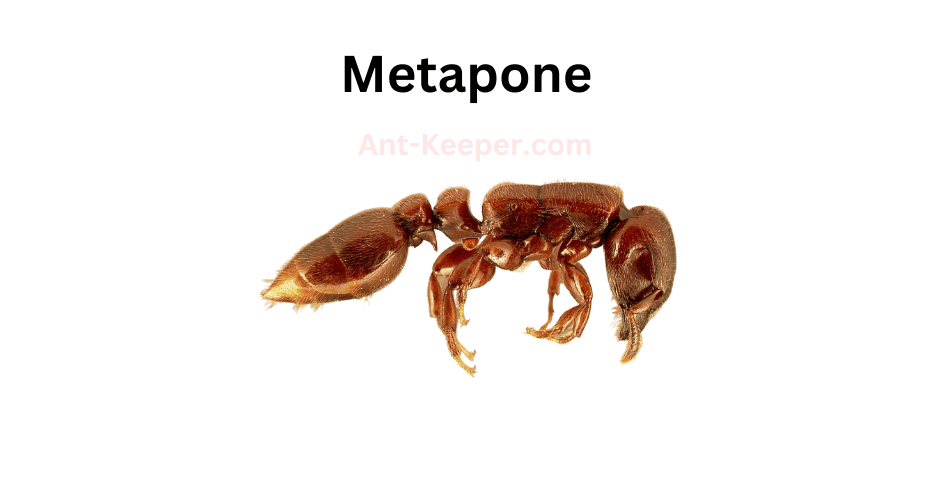
Metaponebe is a species of ant that belongs to the subfamily Ponerinae.
These ants are known for their small size, with workers measuring only a few millimeters in length.
They are typically found in forested areas, where they live in small colonies consisting of a queen and a few dozen workers.
One of the most interesting features of Metaponebe ants is their unique mandibles.
Unlike most ants, which have sharp, pointed mandibles for biting and cutting, Metaponebe ants have flattened, spoon-shaped mandibles that are used for scooping up small prey.
This adaptation allows them to feed on a variety of insects and other small invertebrates that other ants might not be able to catch.
Metaponebe ants are also known for their aggressive behavior.
They will defend their nests fiercely against intruders, and will even attack much larger animals if they feel threatened.
Despite their small size, these ants are not to be underestimated.
Overall, Metaponebe ants are fascinating creatures that have adapted to their environment in unique ways.
Their small size and specialized mandibles make them well-suited for life in the forest, and their aggressive behavior ensures that they are able to protect their colonies from harm.
45) Microdaceton
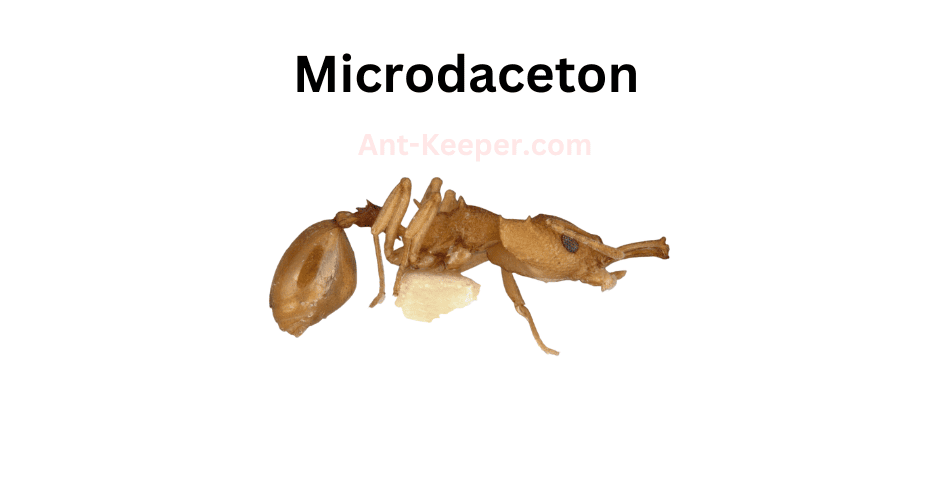
Microdaceton is a genus of ants belonging to the family Formicidae.
These ants are known for their small size, measuring only a few millimeters in length.
The workers of Microdaceton are typically light brown in color and have a slender body shape.
Microdaceton ants are found in a variety of habitats, including forests, grasslands, and deserts.
They are known to be active foragers, searching for food both on the ground and in trees.
These ants are also known to tend to aphids and other insects for their honeydew secretions.
The reproductive behavior of Microdaceton ants is unique.
The males of this genus are wingless and mate with the females inside the nest.
The females then leave the nest to establish new colonies.
Overall, Microdaceton ants are an important part of many ecosystems.
They play a role in seed dispersal, soil aeration, and nutrient cycling.
Despite their small size, these ants have a big impact on the environment.
46) Trailing Pharaoh And Timid Ants, Monomorium

The Trailing Pharaoh ant, also known as the Monomorium pharaonis, is a small, reddish-brown ant species that is commonly found in urban areas.
These ants are known for their ability to form large colonies, which can consist of thousands of individuals.
One interesting behavior of the Trailing Pharaoh ant is their tendency to trail behind other ants.
This behavior is thought to be a form of communication, as the trailing ants are able to follow the scent trail left by the leading ants.
This behavior is also used to locate food sources, as the trailing ants are able to follow the trail to the source of the food.
In contrast to the bold behavior of the Trailing Pharaoh ant, the Timid ant, also known as the Temnothorax species, is a much more cautious species.
These ants are small and brown, and are often found in wooded areas.
They are known for their timid behavior, and will often retreat into their nests when threatened.
Despite their timid nature, the Timid ant is still able to form large colonies.
They are also known for their ability to adapt to changing environments, and can be found in a variety of habitats, including forests, meadows, and even urban areas.
Overall, both the Trailing Pharaoh ant and the Timid ant are fascinating species that demonstrate unique behaviors and adaptations.
By studying these ants, scientists can gain a better understanding of the complex social behaviors and ecological roles of ants in their respective environments.
47) Myrmicaria
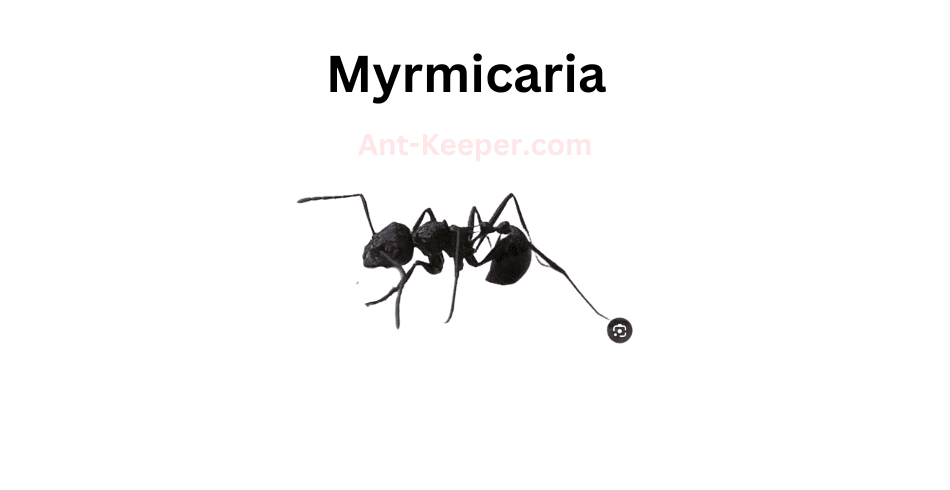
Myrmicaria is a genus of ants that belongs to the family Formicidae.
These ants are known for their aggressive behavior and are commonly found in tropical regions.
The Myrmicaria species are small in size, measuring between 2-5 mm in length.
They have a distinctive appearance with a dark brown or black body and long, slender legs.
One of the most notable features of Myrmicaria ants is their mandibles.
These ants have large, powerful mandibles that they use to capture prey and defend their colony.
They are also known for their ability to spray formic acid as a defense mechanism.
Myrmicaria ants are social insects that live in colonies.
The colonies are typically small, with only a few hundred individuals.
The queen is responsible for laying eggs, and the workers are responsible for caring for the young and maintaining the colony.
These ants are omnivorous and feed on a variety of food sources, including insects, nectar, and honeydew.
They are also known to scavenge for food and will often raid the nests of other ant species.
In conclusion, Myrmicaria ants are fascinating creatures with unique physical and behavioral characteristics.
They play an important role in their ecosystem and are a vital part of the food chain.
48) Mystrium
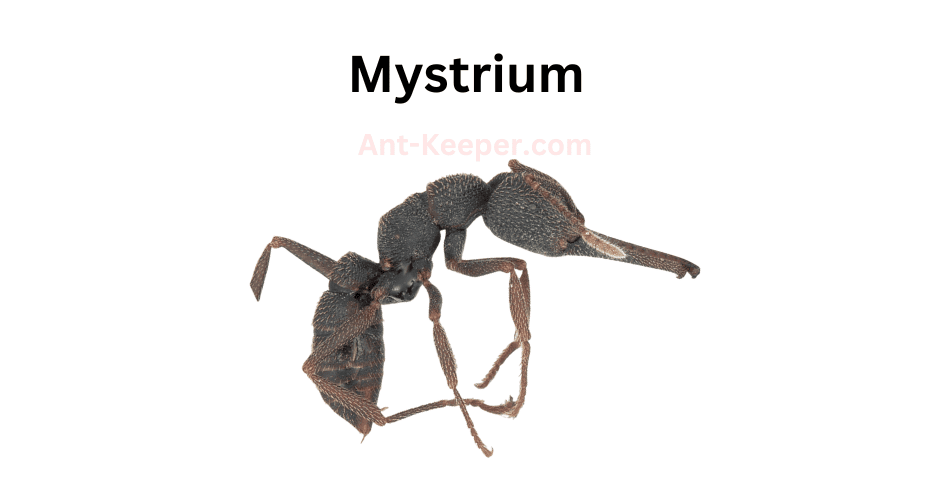
Mystrium is a genus of ants that belongs to the family Formicidae.
These ants are known for their unique morphology and behavior.
They are medium-sized ants, with workers ranging from 3 to 6 mm in length.
The head of the ant is elongated and narrow, with large mandibles that are used for hunting and defense.
The antennae are long and slender, with 12 segments.
Mystrium ants are found in a variety of habitats, including forests, grasslands, and deserts.
They are known for their aggressive behavior and are often seen attacking other ant species.
They are also known to be solitary hunters, with workers often hunting alone or in small groups.
One of the most interesting aspects of Mystrium ants is their reproductive behavior.
Unlike most ants, Mystrium ants have a unique reproductive system where the queen produces both male and female offspring.
This is known as haplodiploidy, where males are haploid and females are diploid.
The males are produced from unfertilized eggs, while the females are produced from fertilized eggs.
Mystrium ants are also known for their ability to communicate with each other through chemical signals.
They use pheromones to mark trails, identify nestmates, and signal danger.
They also use sound to communicate, with workers producing a high-pitched sound when they encounter a threat.
Overall, Mystrium ants are fascinating creatures that have unique morphology, behavior, and reproductive systems.
They play an important role in their ecosystems and are a valuable subject of study for scientists.
49) Nesomyrmex
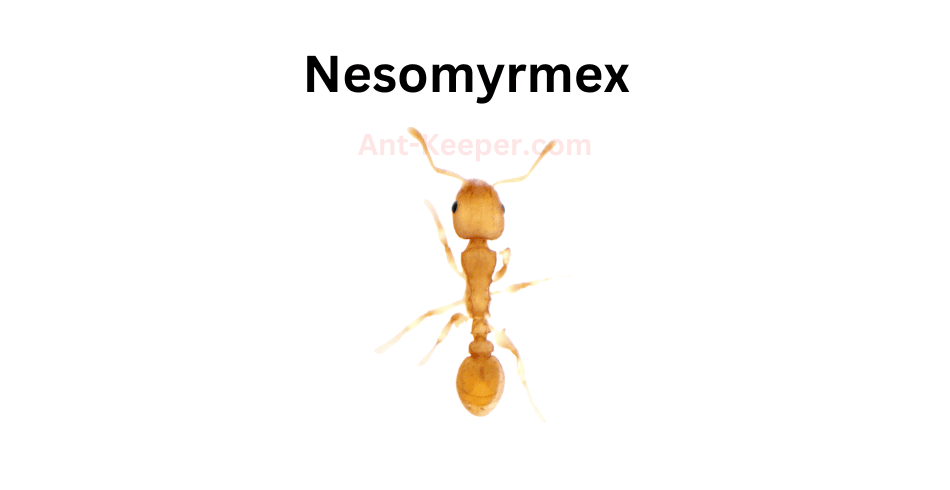
Nesomyrmex is a genus of ants that belongs to the subfamily Myrmicinae.
These ants are small in size, measuring between 2-5 mm in length.
They are known for their distinctive appearance, with a slender body and elongated mandibles.
The coloration of Nesomyrmex ants varies between species, with some being black, while others are reddish-brown or yellowish-brown.
Nesomyrmex ants are primarily found in tropical and subtropical regions, where they inhabit a variety of habitats, including forests, grasslands, and deserts.
They are known to be highly adaptable and can thrive in both wet and dry environments.
These ants are social insects and live in colonies that can range in size from a few dozen to several hundred individuals.
The colony is typically led by a queen, who is responsible for laying eggs and maintaining the colony's reproductive population.
The workers, which are sterile females, are responsible for foraging for food, caring for the young, and defending the colony.
Nesomyrmex ants are known to be aggressive and will defend their colony fiercely against intruders.
They are also known to be opportunistic feeders, consuming a wide variety of food sources, including insects, seeds, and nectar.
Overall, Nesomyrmex ants are fascinating insects that play an important role in their ecosystems.
Their adaptability and resilience make them a valuable subject of study for scientists and researchers.
50) Crazy Ants, Nylanderia

Crazy ants, also known as Nylanderia fulva, are a species of ant that belong to the family Formicidae.
They are small in size, measuring only about 2.2 to 3 mm in length, and are reddish-brown in color.
These ants are known for their erratic and unpredictable behavior, hence the name "crazy ants."
Crazy ants are native to South America, but have since spread to other parts of the world, including North America, Asia, and Australia.
They are highly adaptable and can thrive in a variety of environments, including urban areas, forests, and grasslands.
One of the most notable characteristics of crazy ants is their ability to form large colonies with multiple queens.
This allows them to quickly establish themselves in new areas and outcompete other ant species.
Crazy ants are also known for their aggressive behavior towards other insects and animals, including humans.
In addition to their aggressive behavior, crazy ants are also known for their ability to cause damage to electrical equipment.
They are attracted to electrical currents and can easily short-circuit electronics, causing damage and potentially starting fires.
Despite their small size, crazy ants are a formidable species that can have a significant impact on their environment.
As they continue to spread to new areas, it is important to monitor their behavior and take steps to control their populations in order to minimize their impact on ecosystems and human infrastructure.
51) Ocymyrmex
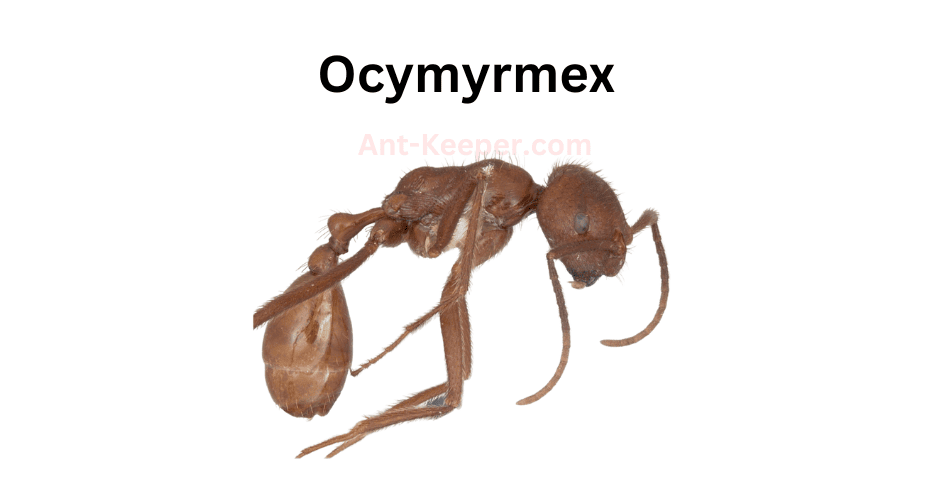
Ocymyrmexbe is a species of ant that belongs to the family Formicidae.
These ants are known for their unique physical characteristics, including their elongated mandibles and slender bodies.
They are typically found in arid regions and are well adapted to survive in harsh desert environments.
Ocymyrmexbe ants are highly social insects and live in large colonies that can contain thousands of individuals.
They are known for their aggressive behavior and will defend their territory fiercely against other ant species and predators.
These ants are omnivorous and will feed on a variety of food sources, including insects, seeds, and nectar.
They are also known to scavenge for food and will often raid the nests of other ant species to steal their food.
Ocymyrmexbe ants are important members of their ecosystems and play a crucial role in maintaining the balance of their local environments.
They help to control the populations of other insects and are an important food source for many predators.
Despite their importance, these ants are facing threats from habitat destruction and climate change.
As their habitats become increasingly threatened, it is important to take steps to protect these valuable members of our ecosystems.
52) Trap-Jaw Ants, Odontomachus

Trap-jaw ants are a species of ants that belong to the genus Odontomachus.
These ants are known for their unique and powerful mandibles, which they use to capture prey and defend their colonies.
The mandibles of trap-jaw ants are capable of closing at incredible speeds, reaching up to 140 miles per hour.
This allows them to snap their jaws shut with incredible force, which can stun or kill their prey.
Trap-jaw ants are found in a variety of habitats, including forests, grasslands, and deserts.
They are typically active during the day and are known to be highly territorial.
These ants are also known for their ability to jump, which they use to escape danger or to capture prey.
Trap-jaw ants are omnivorous, meaning that they eat both plant and animal matter.
They are known to feed on a variety of insects, including other ants, as well as nectar and other sweet substances.
These ants are also known to be scavengers, feeding on dead insects and other organic matter.
The colonies of trap-jaw ants are typically small, with only a few hundred individuals.
However, they are highly organized and have a strict social hierarchy.
The queen is the largest member of the colony and is responsible for laying eggs.
The workers, which are all female, are responsible for foraging, caring for the young, and defending the colony.
Overall, trap-jaw ants are fascinating creatures that have evolved unique adaptations to help them survive in their environments.
Their powerful mandibles and jumping abilities make them formidable predators, while their social organization allows them to work together to protect their colonies and ensure their survival.
53) Oecophylla
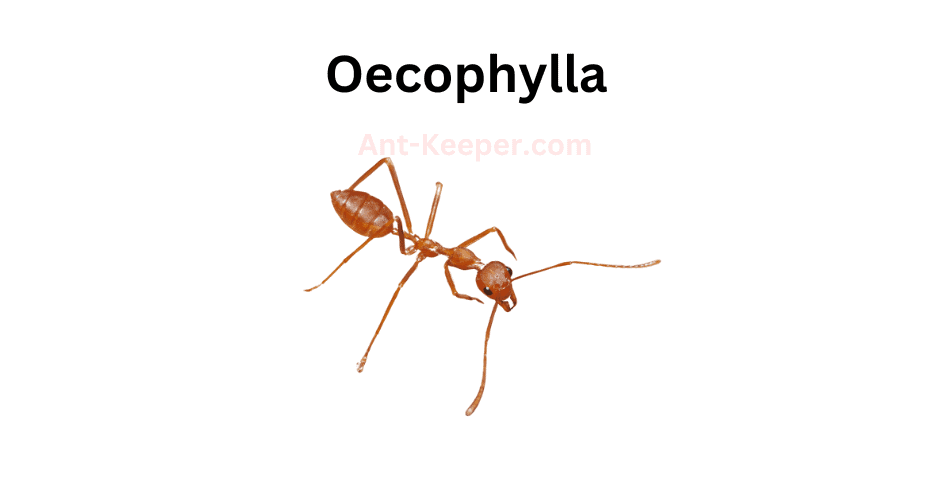
Oecophylla is a genus of ants that belongs to the family Formicidae.
The most well-known species in this genus is Oecophylla smaragdina, commonly known as the weaver ant.
These ants are known for their unique ability to weave leaves together to create nests, which can be found in trees and shrubs.
Oecophylla ants are typically green in color, with long, slender bodies and large mandibles.
They are highly social insects, living in colonies that can contain thousands of individuals.
The colonies are organized into a caste system, with workers responsible for foraging, nest building, and caring for the young, while the queen is responsible for laying eggs.
One of the most interesting aspects of Oecophylla ants is their use in agriculture.
These ants are known to protect certain plants from herbivores, such as caterpillars and beetles, in exchange for a sugary substance produced by the plant.
This mutually beneficial relationship is known as mutualism and is an important example of how different species can work together to survive.
Overall, Oecophylla ants are fascinating creatures that play an important role in their ecosystems.
Their unique nest-building abilities and agricultural partnerships make them a valuable species to study and appreciate.
54) Ophthalmopone
Ophthalmoponebe is a species of ant that belongs to the subfamily Ponerinae.
These ants are known for their unique physical characteristics, including their elongated mandibles and large eyes.
The name "Ophthalmoponebe" is derived from the Greek words "ophthalmos" meaning eye and "ponos" meaning labor, which refers to the ant's ability to work tirelessly despite their large eyes.
Ophthalmoponebe ants are typically found in tropical and subtropical regions, where they live in underground nests.
They are known for their aggressive behavior and will defend their nests fiercely against any perceived threats.
These ants are also known to be solitary hunters, preying on other insects and small invertebrates.
One of the most interesting aspects of Ophthalmoponebe ants is their reproductive behavior.
Unlike many other ant species, Ophthalmoponebe queens do not mate with multiple males.
Instead, they mate with a single male and store his sperm in a specialized organ called the spermatheca.
This allows the queen to fertilize her eggs over a long period of time, without the need for repeated mating.
Overall, Ophthalmoponebe ants are a fascinating species with unique physical and behavioral characteristics.
Their aggressive nature and solitary hunting habits make them an important part of their ecosystem, and their reproductive behavior provides insight into the evolution of social insects.
55) Oxyopomyrmex
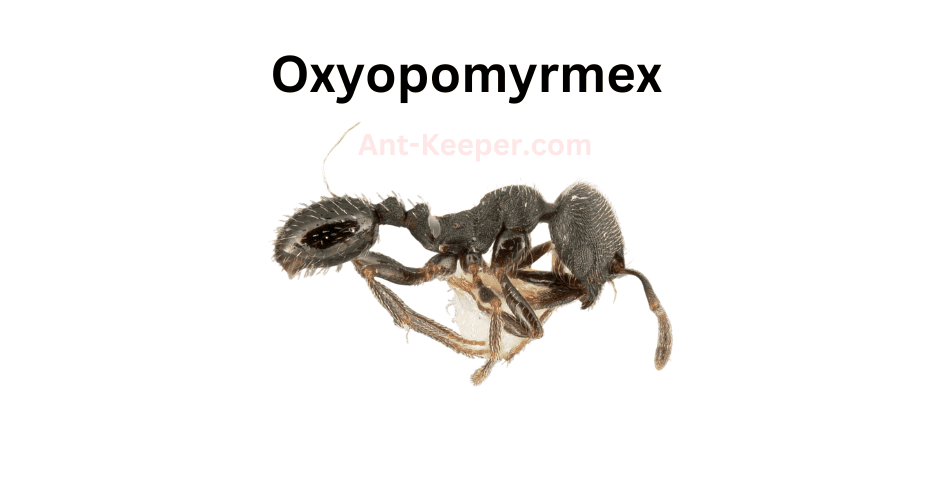
Oxyopomyrmexbe is a species of ant belonging to the family Formicidae.
These ants are known for their unique physical characteristics, including their elongated mandibles and slender bodies.
They are typically found in arid regions and are well adapted to survive in harsh environments.
Oxyopomyrmexbe ants are highly social insects, living in large colonies that can contain thousands of individuals.
They are known for their aggressive behavior and will defend their territory fiercely against other ant species.
These ants are also known to be opportunistic feeders, consuming a wide variety of food sources including insects, seeds, and nectar.
One of the most interesting aspects of Oxyopomyrmexbe ants is their ability to regulate their body temperature.
They are able to do this by adjusting their behavior and moving to different areas of their nest depending on the temperature outside.
This allows them to maintain a stable internal temperature and survive in extreme heat or cold.
Overall, Oxyopomyrmexbe ants are fascinating creatures with unique adaptations that allow them to thrive in challenging environments.
Their social behavior and aggressive nature make them an important part of their ecosystem, and their ability to regulate their body temperature is a testament to their resilience and adaptability.
56) Paltothyreus
Paltothyreus is a genus of ants belonging to the family Formicidae.
The ants in this genus are known for their large size and distinctive appearance.
Paltothyreus ants have elongated bodies and long legs, which allow them to move quickly and efficiently through their environment.
One of the most notable species in the Paltothyreus genus is Paltothyreus tarsatus.
This ant is known for its impressive size, with workers measuring up to 20 millimeters in length.
The ants are typically black or dark brown in color, with a shiny exoskeleton that reflects light.
Paltothyreus ants are primarily found in tropical and subtropical regions, where they live in underground nests.
These nests can be quite large, with thousands of individuals living together in a complex social structure.
The ants are known for their aggressive behavior, and will defend their nests fiercely against any perceived threats.
Despite their intimidating appearance, Paltothyreus ants are an important part of their ecosystem.
They play a key role in controlling the populations of other insects, and are also important pollinators for many plant species.
As such, they are an important part of the natural world and are deserving of our respect and protection.
57) Crazy Ants, Paratrechina

Crazy ants, also known as Nylanderia fulva, are a species of ant that belong to the family Formicidae.
They are small in size, measuring only about 2.2 to 3 mm in length, and are reddish-brown in color.
These ants are known for their erratic and unpredictable behavior, hence the name "crazy ants."
Crazy ants are native to South America, but have since spread to other parts of the world, including North America, Asia, and Australia.
They are highly adaptable and can thrive in a variety of environments, including urban areas, forests, and grasslands.
One of the most notable characteristics of crazy ants is their ability to form large colonies with multiple queens.
This allows them to quickly establish themselves in new areas and outcompete other ant species.
Crazy ants are also known for their aggressive behavior towards other insects and animals, including humans.
In addition to their aggressive behavior, crazy ants are also known for their ability to cause damage to electrical equipment.
They are attracted to electrical currents and can easily short-circuit electronics, causing damage and potentially starting fires.
Despite their small size, crazy ants are a formidable species that can have a significant impact on their environment.
As they continue to spread to new areas, it is important to monitor their behavior and take steps to control their populations in order to minimize their impact on ecosystems and human infrastructure.
58) Petalomyrmex
Petalomyrmex is a genus of ants that belongs to the subfamily Myrmicinae.
These ants are known for their unique morphology, which includes a flattened head and a slender body.
The workers of Petalomyrmex are small in size, measuring between 2 and 3 millimeters in length.
Petalomyrmex ants are typically found in tropical and subtropical regions, where they inhabit forested areas.
They are known to nest in the soil, under rocks, and in leaf litter.
These ants are also known to form small colonies, with only a few hundred individuals.
One of the most interesting aspects of Petalomyrmex ants is their feeding behavior.
These ants are known to be specialized predators of other ants, particularly those belonging to the genus Pheidole.
They use their flattened heads to wedge themselves into the narrow tunnels of Pheidole nests, where they then attack and kill the resident ants.
Despite their small size, Petalomyrmex ants are known to be aggressive and highly territorial.
They will defend their nests and food sources against other ant species, often engaging in fierce battles.
Overall, Petalomyrmex ants are a fascinating and unique group of ants that have adapted to a specialized predatory lifestyle.
Their small size and aggressive behavior make them an important part of the ecosystem in which they live.
59) Phasmomyrmex
Phasmomyrmex is a genus of ants belonging to the family Formicidae.
These ants are known for their unique morphology, which includes elongated mandibles that are used for capturing prey.
The genus is characterized by its slender body shape and long legs, which allow for efficient movement through the forest floor.
Phasmomyrmex ants are primarily found in tropical regions, where they inhabit leaf litter and soil.
They are known to be predatory, feeding on other insects and small invertebrates.
The elongated mandibles of Phasmomyrmex ants are used to capture prey, and they are capable of delivering a powerful bite.
The reproductive behavior of Phasmomyrmex ants is also unique.
The queen ant is known to lay eggs that hatch into larvae, which are then fed by worker ants.
Once the larvae have matured, they pupate and eventually emerge as adult ants.
Overall, Phasmomyrmex ants are fascinating creatures that have adapted to their environment in unique ways.
Their elongated mandibles and slender body shape allow them to efficiently capture prey and move through the forest floor, while their reproductive behavior is also noteworthy.
60) Big Headed Ants, Pheidole

Big Headed Ants, also known as Pheidole megacephala, are a species of ant that belong to the family Formicidae.
These ants are known for their distinctive large heads, which are used for defense and communication within their colonies.
Big Headed Ants are typically found in tropical and subtropical regions, where they build their nests in soil, leaf litter, and other organic matter.
They are omnivorous, feeding on a variety of insects, seeds, and other small organisms.
One of the most interesting aspects of Big Headed Ants is their social behavior.
They live in large colonies, with a queen ant at the center of the hierarchy.
The queen is responsible for laying eggs, while the other ants in the colony perform various tasks such as foraging for food, caring for the young, and defending the colony from predators.
Big Headed Ants are also known for their ability to displace other ant species in their habitats.
They are aggressive and have been known to attack and kill other ants, as well as compete with them for resources.
Despite their aggressive behavior, Big Headed Ants are not considered a major pest species.
However, their ability to displace other ant species and their potential impact on native ecosystems make them an important species to study and monitor.
61) Pheidologeton
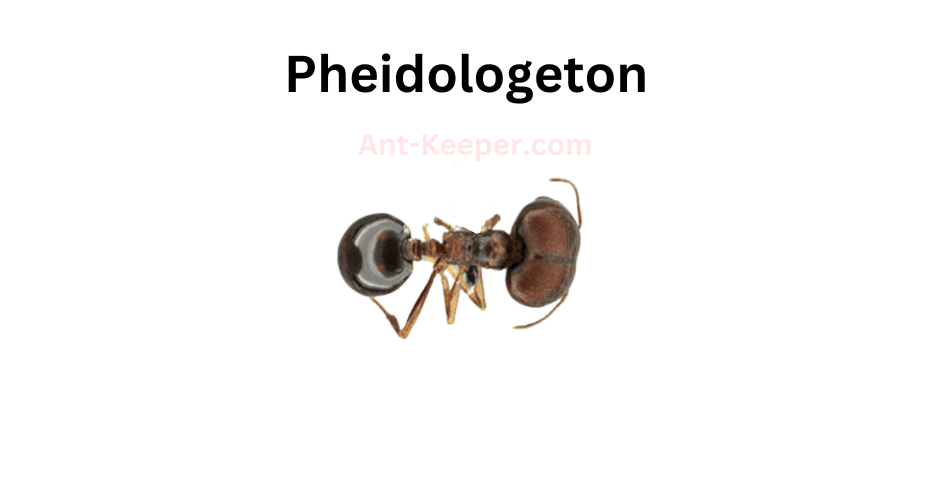
Pheidologeton is a genus of ants belonging to the family Formicidae.
These ants are commonly known as weaver ants due to their unique ability to construct nests by weaving leaves together using silk produced by their larvae.
Pheidologeton ants are found in tropical regions and are known for their aggressive behavior and large colony sizes.
The workers of Pheidologeton ants are polymorphic, meaning they come in different sizes and perform different tasks within the colony.
The smaller workers are responsible for foraging and caring for the brood, while the larger workers defend the colony and construct the nests.
Pheidologeton ants are also known for their ability to form supercolonies, where multiple nests are connected and function as a single unit.
Pheidologeton ants are omnivorous, feeding on a variety of insects, nectar, and other plant materials.
They are also known to engage in mutualistic relationships with other insects, such as scale insects and aphids, which provide them with honeydew in exchange for protection.
Overall, Pheidologeton ants are fascinating creatures with unique behaviors and adaptations that allow them to thrive in their tropical habitats.
62) Phrynoponera
Phrynoponera is a genus of ants that belongs to the subfamily Ponerinae.
The species Phrynoponera be is a large, black ant that can grow up to 20 millimeters in length.
They have a distinctive, flattened head and mandibles that are adapted for crushing and cutting prey.
These ants are known for their aggressive behavior and are often found hunting in groups.
They are also known to be highly territorial and will defend their nests fiercely against intruders.
Phrynoponera be is a ground-dwelling ant that prefers to nest in soil or leaf litter.
They are omnivorous and will feed on a variety of insects, small vertebrates, and plant material.
The reproductive system of Phrynoponera be is unique among ants.
The queen produces only a few large eggs, which hatch into larvae that are fed by the workers.
These larvae develop into large, wingless females that are capable of reproducing without mating.
This reproductive strategy is known as thelytoky and is rare among ants.
Overall, Phrynoponera be is a fascinating and unique species of ant that is well adapted to its environment.
Its aggressive behavior and reproductive strategy make it an interesting subject for study and observation.
63) Restless Ants, Plagiolepis
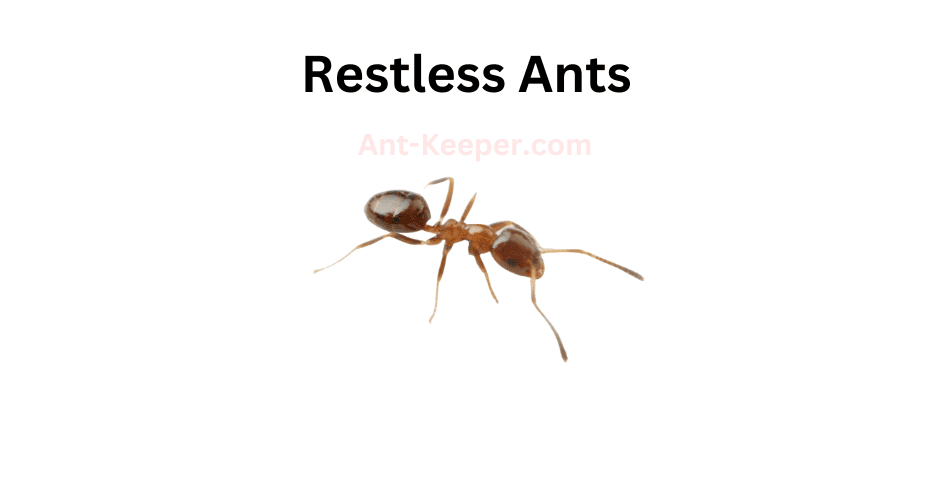
Restless Ants, also known as the Red Ants, are a species of ants that belong to the Formicidae family.
They are known for their highly active and restless behavior, constantly moving around in search of food and resources.
These ants are typically small in size, measuring around 2-3 mm in length.
They have a reddish-brown coloration and a slender body shape, with long legs and antennae.
Restless Ants are social insects, living in large colonies that can contain thousands of individuals.
Restless Ants are omnivorous, feeding on a variety of food sources including insects, fruits, and seeds.
They are also known to scavenge for food, often raiding the nests of other ant species to steal their resources.
One of the most interesting aspects of Restless Ants is their ability to adapt to changing environments.
They are able to quickly adjust their behavior and foraging patterns in response to changes in their surroundings, such as changes in temperature or the availability of food.
Restless Ants are also known for their aggressive behavior, particularly when defending their nests or resources.
They have powerful mandibles that they use to bite and defend themselves against predators or other ants.
Overall, Restless Ants are fascinating creatures that play an important role in their ecosystem.
Their highly active and adaptable behavior makes them a valuable species to study and understand.
64) Platythyrea
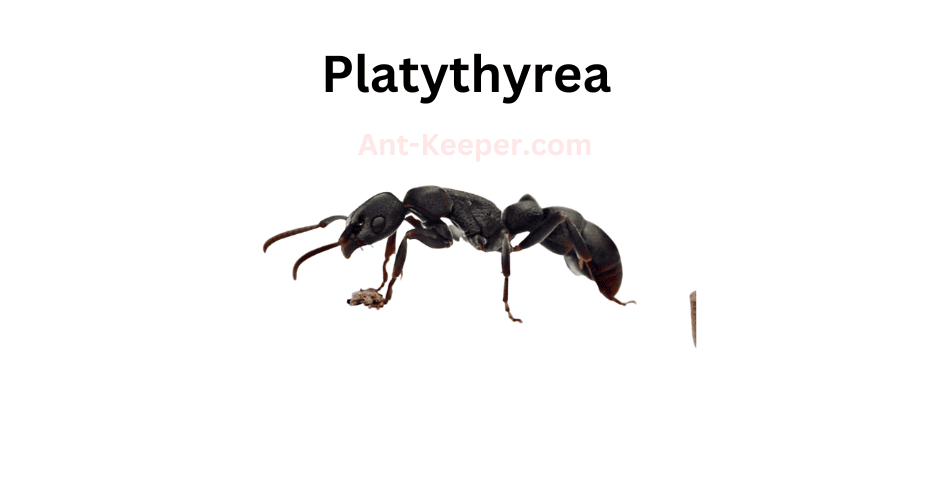
Platythyreabe is a species of ant that belongs to the family Formicidae.
These ants are known for their unique physical characteristics, including their flattened bodies and elongated mandibles.
Platythyreabe ants are typically found in forested areas and are known to be active foragers, often hunting for small insects and other invertebrates.
One of the most interesting aspects of Platythyreabe ants is their social behavior.
These ants live in colonies that are typically composed of several hundred individuals.
Within these colonies, there is a strict hierarchy, with a single queen ant at the top.
The queen is responsible for laying eggs, while the other ants in the colony are responsible for caring for the young and maintaining the nest.
Platythyreabe ants are also known for their aggressive behavior.
When threatened, these ants will use their elongated mandibles to defend themselves and their colony.
They are also known to release a chemical signal that alerts other ants in the colony to the presence of a threat.
Despite their aggressive behavior, Platythyreabe ants play an important role in their ecosystem.
They help to control populations of small insects and other invertebrates, and they also serve as a food source for larger predators.
Overall, Platythyreabe ants are fascinating creatures that offer a unique glimpse into the complex world of social insects.
65) Plectroctena
Plectroctenabe is a species of ant that belongs to the Formicidae family.
These ants are known for their unique physical characteristics, including their elongated mandibles and spiny exoskeletons.
Plectroctenabe ants are typically found in forested areas, where they build their nests in soil or leaf litter.
These ants are known for their aggressive behavior and are often seen engaging in territorial disputes with other ant species.
Plectroctenabe ants are also known to be omnivorous, feeding on a variety of insects, fruits, and seeds.
One interesting aspect of Plectroctenabe ants is their reproductive strategy.
These ants have a unique system of reproduction called haplodiploidy, where females are diploid and males are haploid.
This means that females have two sets of chromosomes, while males only have one.
This system allows for a high degree of genetic diversity within the colony.
Overall, Plectroctenabe ants are fascinating creatures with unique physical and behavioral characteristics.
Their aggressive behavior and reproductive strategy make them an important species to study in the field of entomology.
66) Spiny Ants, Polyrhachis
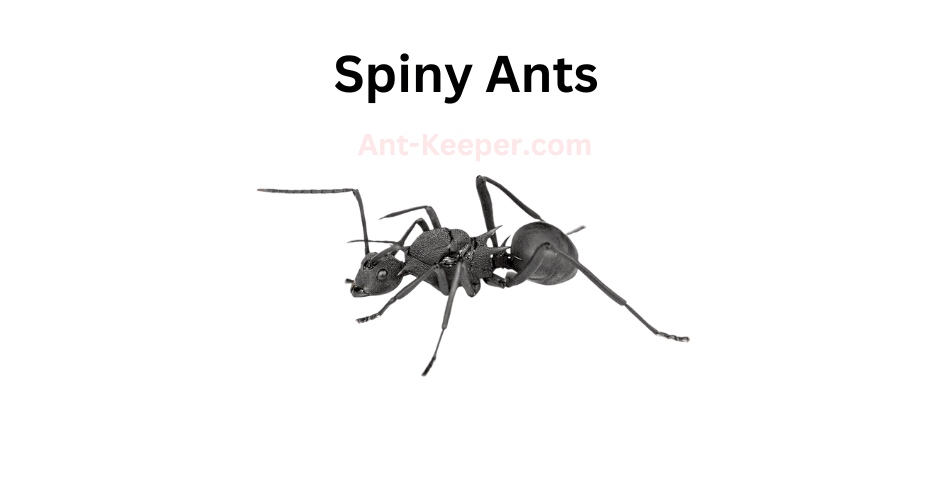
Spiny ants, also known as Polyrhachis sp., are a species of ants that belong to the family Formicidae.
These ants are known for their unique appearance, with spines covering their bodies that serve as a form of protection against predators.
Spiny ants are typically black or dark brown in color and range in size from 4 to 10 millimeters in length.
They are found in a variety of habitats, including forests, grasslands, and urban areas.
These ants are known for their aggressive behavior and will defend their nests fiercely.
Spiny ants are omnivores, feeding on a variety of food sources including insects, nectar, and honeydew.
They are also known to tend to aphids, protecting them from predators in exchange for the sweet honeydew they produce.
These ants are social insects, living in colonies that can range in size from a few dozen to several thousand individuals.
The colony is typically led by a queen ant, who is responsible for laying eggs and maintaining the colony's population.
Spiny ants play an important role in their ecosystems, serving as both predators and prey.
They help to control the populations of other insects and provide food for larger animals such as birds and reptiles.
Overall, spiny ants are a fascinating species of ants that are known for their unique appearance and aggressive behavior.
They play an important role in their ecosystems and are an important part of the natural world.
67) Prionopelta
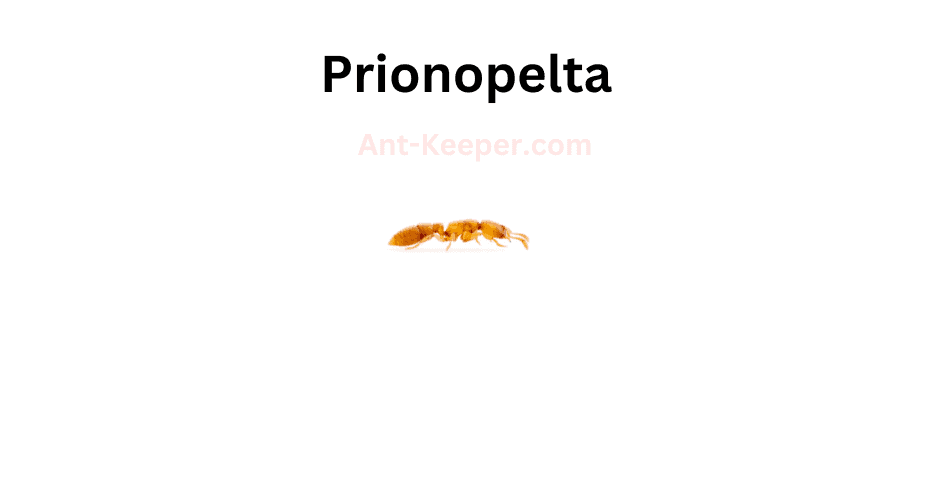
Prionopeltabe is a species of ant that belongs to the family Formicidae.
These ants are known for their unique physical characteristics and behavior.
They have a dark brown or black body with a shiny exoskeleton.
Their head is elongated and narrow, with large mandibles that are used for hunting and defense.
The workers of this species are small, measuring only a few millimeters in length, while the queen can grow up to 10 millimeters.
Prionopeltabe ants are known for their aggressive behavior and are often found in large colonies.
They are omnivorous and feed on a variety of food sources, including insects, fruits, and nectar.
These ants are also known to farm aphids for their honeydew, which they use as a food source.
One of the most interesting aspects of Prionopeltabe ants is their unique nesting behavior.
They build their nests in the soil, but instead of creating a single entrance, they create multiple entrances that lead to a central chamber.
This allows the ants to quickly move from one area of the nest to another, making it easier for them to defend their colony from predators.
Overall, Prionopeltabe ants are fascinating creatures that play an important role in their ecosystem.
Their aggressive behavior and unique nesting habits make them a valuable subject of study for scientists and researchers.
68) Pristomyrmex
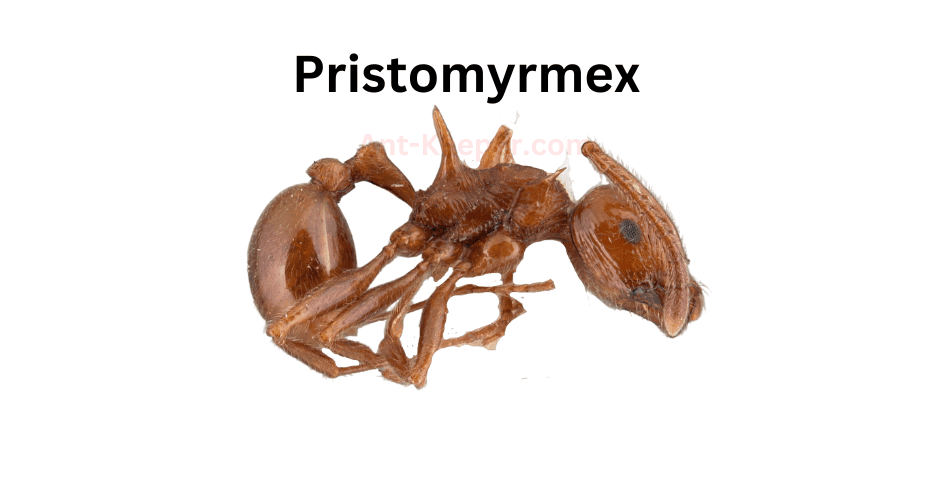
Pristomyrmex is a genus of ants that belongs to the subfamily Myrmicinae.
The ants in this genus are small in size, measuring between 2-4mm in length.
They are known for their distinctive appearance, with a slender and elongated body shape, and a narrow waist that separates the thorax and abdomen.
Pristomyrmex ants are typically found in forested areas, where they nest in soil or leaf litter.
They are known to be aggressive predators, feeding on other insects and small invertebrates.
They are also known to have a mutualistic relationship with certain plant species, where they protect the plants from herbivores in exchange for food and shelter.
One species of Pristomyrmex, Pristomyrmex punctatus, is known for its unique behavior of "playing dead" when threatened.
When disturbed, these ants will curl up their legs and antennae and remain motionless, resembling a dead insect.
This behavior is thought to be a defense mechanism against predators.
Overall, Pristomyrmex ants are an important part of forest ecosystems, playing a role in both predation and mutualism.
Their unique appearance and behavior make them an interesting subject for study and observation.
69) Probolomyrmex
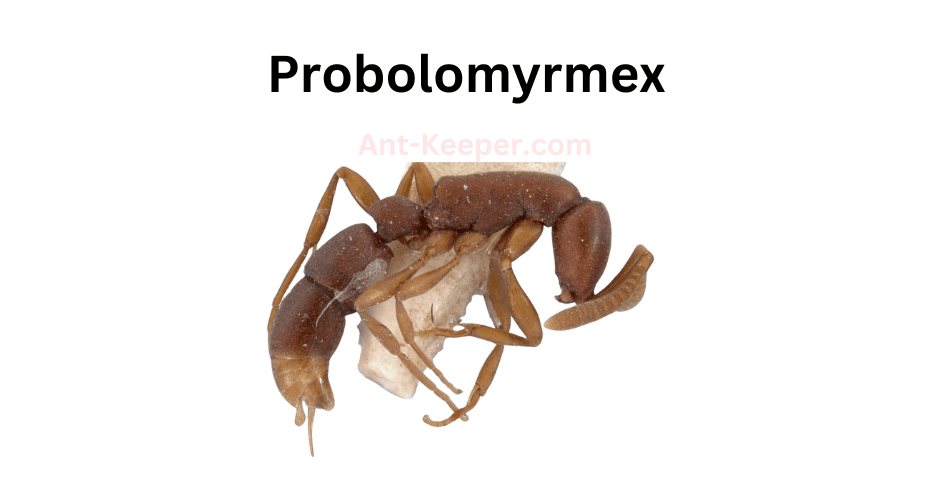
Probolomyrmex is a genus of ants that belongs to the subfamily Proceratiinae.
These ants are known for their unique morphology, which includes a long and slender body, a narrow head, and elongated mandibles.
The genus is characterized by the presence of a distinct petiole, which separates the thorax and the abdomen.
Probolomyrmex ants are typically found in tropical and subtropical regions, where they inhabit a variety of habitats, including forests, grasslands, and deserts.
They are known to be highly aggressive and territorial, often engaging in fierce battles with other ant species.
One of the most interesting aspects of Probolomyrmex ants is their social behavior.
These ants are known to be highly organized, with a well-defined caste system that includes workers, soldiers, and reproductive individuals.
The workers are responsible for foraging, nest maintenance, and caring for the young, while the soldiers defend the colony against predators and other threats.
Despite their small size, Probolomyrmex ants play an important role in their ecosystem.
They are known to be efficient predators, feeding on a variety of insects and other small invertebrates.
They also help to aerate the soil and distribute nutrients, which can have a positive impact on plant growth.
Overall, Probolomyrmex ants are a fascinating and important group of insects that are worthy of further study and conservation efforts.
70) Hairy Curltail Ants, Proceratium
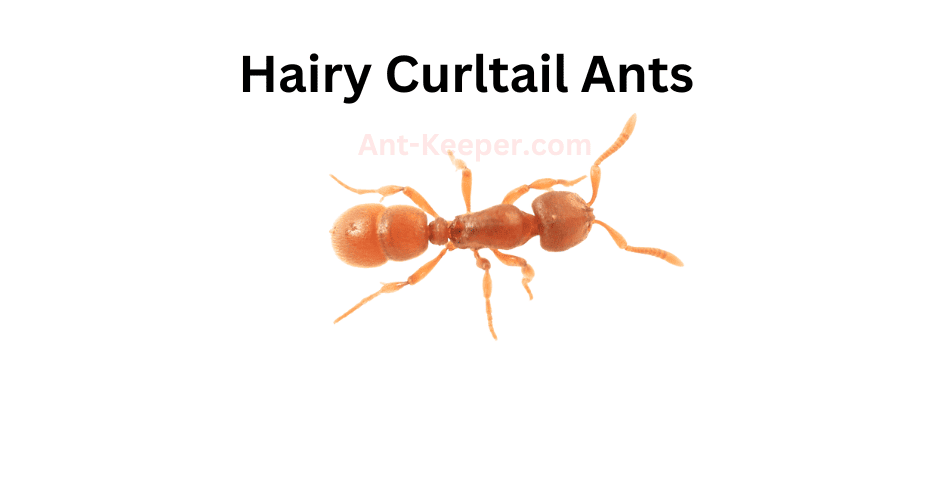
The Hairy Curltail Ant (Camponotus pilicornis) is a species of ant belonging to the genus Camponotus.
These ants are known for their distinctive hairy appearance, which covers their entire body.
The hairs on their body are long and curly, giving them a unique and striking appearance.
Hairy Curltail Ants are typically found in forested areas, where they build their nests in dead wood or under rocks.
They are known to be highly territorial and will aggressively defend their nests against intruders.
These ants are also known to be omnivorous, feeding on a variety of food sources including insects, nectar, and honeydew.
The Hairy Curltail Ant is a relatively large ant species, with workers measuring between 6-12mm in length.
The queen ant is even larger, measuring up to 15mm in length.
These ants are also known for their strong mandibles, which they use to defend their nests and capture prey.
One interesting aspect of the Hairy Curltail Ant is their ability to communicate with each other through the use of pheromones.
These chemical signals are used to mark trails, identify nestmates, and coordinate foraging activities.
Overall, the Hairy Curltail Ant is a fascinating species of ant with a unique appearance and interesting behaviors.
Their presence in forested areas can have important ecological implications, as they play a role in the ecosystem as both predators and scavengers.
71) Promyopias
Promyopiasbe is a species of ant belonging to the family Formicidae.
These ants are known for their small size, typically measuring around 2-3 millimeters in length.
They have a dark brown or black coloration and a slender body shape.
Promyopiasbe ants are typically found in forested areas, where they nest in soil or leaf litter.
They are known to be active foragers, often traveling long distances in search of food.
These ants are omnivorous, feeding on a variety of food sources including insects, nectar, and plant sap.
One interesting aspect of Promyopiasbe ants is their social behavior.
They live in colonies, with a queen ant responsible for laying eggs and workers responsible for caring for the young and gathering food.
These ants communicate with each other using chemical signals, which they produce and detect using their antennae.
Despite their small size, Promyopiasbe ants play an important role in their ecosystem.
They help to control populations of other insects and contribute to the nutrient cycling process by breaking down organic matter in the soil.
Overall, Promyopiasbe ants are a fascinating species with unique characteristics and behaviors.
Their role in their ecosystem highlights the importance of even the smallest organisms in maintaining a healthy and balanced environment.
72) Psalidomyrmex
Psalidomyrmex is a genus of ants belonging to the subfamily Myrmicinae.
These ants are known for their unique morphology, which includes a flattened head and a long, slender body.
The workers of this genus are typically small in size, measuring between 2-4mm in length.
Psalidomyrmex ants are found in a variety of habitats, including forests, grasslands, and deserts.
They are known to be highly territorial and will aggressively defend their nests against intruders.
These ants are also known for their ability to climb trees and other vertical surfaces, which they do using specialized adhesive pads on their feet.
One of the most interesting aspects of Psalidomyrmex ants is their diet.
These ants are known to be specialized predators of other ants, particularly those belonging to the genus Pheidole.
They will often raid the nests of these ants, killing and carrying off workers and brood.
Despite their small size, Psalidomyrmex ants play an important role in their ecosystems.
By preying on other ants, they help to regulate the populations of these insects and maintain a healthy balance in the ecosystem.
73) Pseudolasius
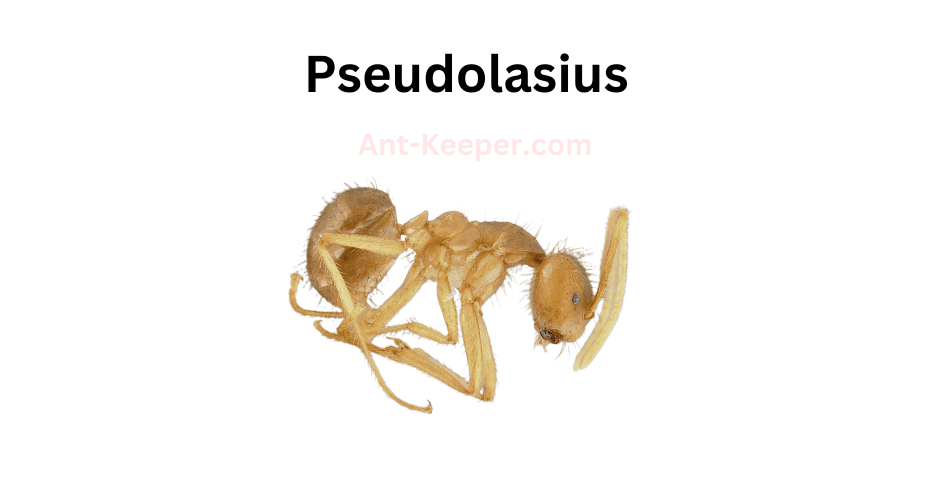
Pseudolasius is a genus of ants belonging to the family Formicidae.
These ants are known for their small size and distinctive appearance, with workers measuring between 2-3 mm in length.
The genus is characterized by the presence of a single petiolar node and a lack of spines on the mesosoma.
Pseudolasius ants are typically found in forested areas, where they forage for food and build their nests in soil or leaf litter.
They are known to feed on a variety of food sources, including insects, nectar, and honeydew produced by sap-sucking insects.
One interesting aspect of Pseudolasius behavior is their tendency to form large colonies with multiple queens.
This is in contrast to many other ant species, which typically have a single queen per colony.
The presence of multiple queens allows Pseudolasius colonies to grow rapidly and efficiently exploit food resources.
Despite their small size, Pseudolasius ants play an important role in forest ecosystems.
They are known to disperse seeds and contribute to soil health through their nest-building activities.
Additionally, they serve as an important food source for many other animals, including birds and small mammals.
Overall, Pseudolasius ants are a fascinating and important group of insects that play a vital role in forest ecosystems.
74) Fierce Pennet And Pavement Ants, Rhoptromyrmex
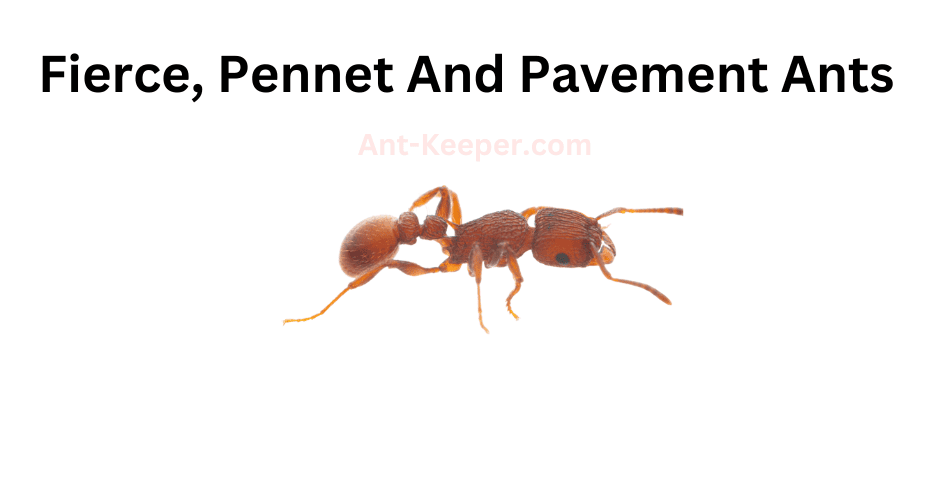
The Fierce Pennet Ant and Pavement Ant are two species of ants that are commonly found in urban and suburban environments.
Both species belong to the Formicidae family and are known for their aggressive behavior towards other ants and insects.
The Fierce Pennet Ant, also known as Tetramorium caespitum, is a small ant species that typically measures between 2.5 and 3.5 mm in length.
They are reddish-brown in color and have a distinctive heart-shaped head.
Fierce Pennet Ants are known for their aggressive behavior towards other ant species and will often engage in territorial battles to defend their colonies.
Pavement Ants, also known as Tetramorium immigrans, are slightly larger than Fierce Pennet Ants, measuring between 2.5 and 4 mm in length.
They are dark brown to black in color and have a distinct thorax with parallel lines.
Pavement Ants are commonly found in urban environments and are known for their ability to nest in cracks and crevices in pavement and concrete.
Both Fierce Pennet and Pavement Ants are omnivorous and will feed on a variety of food sources, including insects, seeds, and sugary substances.
They are also known for their ability to form large colonies, with some colonies containing thousands of individual ants.
Despite their small size, both Fierce Pennet and Pavement Ants can be a nuisance to humans, particularly when they invade homes and buildings in search of food and shelter.
However, they also play an important role in the ecosystem, helping to control populations of other insects and serving as a food source for larger animals.
75) Santschiella
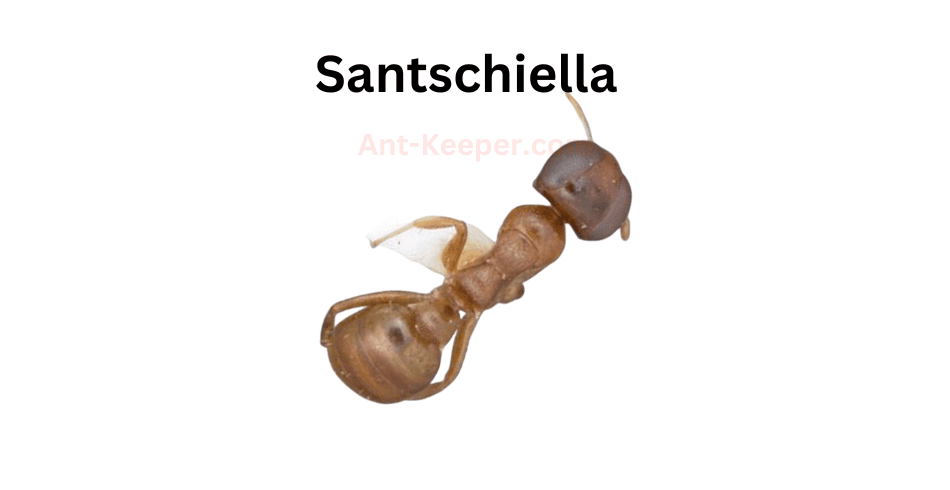
Santschiellabe is a species of ant that belongs to the Formicidae family.
It is a relatively small ant, with workers measuring around 2-3 mm in length.
The ant has a dark brown to blackish coloration, with a shiny and smooth exoskeleton.
Santschiellabe ants are known to be arboreal, meaning they live in trees and other elevated structures.
They are often found in tropical and subtropical regions, where they build their nests in the hollows of trees or in the crevices of rocks.
The ants are also known to be highly territorial, and will aggressively defend their nests against intruders.
The diet of Santschiellabe ants consists mainly of insects and other small arthropods.
They are also known to feed on nectar and honeydew, which they obtain from plants and other insects.
One interesting characteristic of Santschiellabe ants is their ability to produce formic acid.
This acid is used as a defense mechanism against predators, and can cause irritation and pain to potential threats.
Overall, Santschiellabe ants are a fascinating species that play an important role in their ecosystems.
Their arboreal lifestyle and defensive behavior make them a unique and important part of the natural world.
76) Simopone
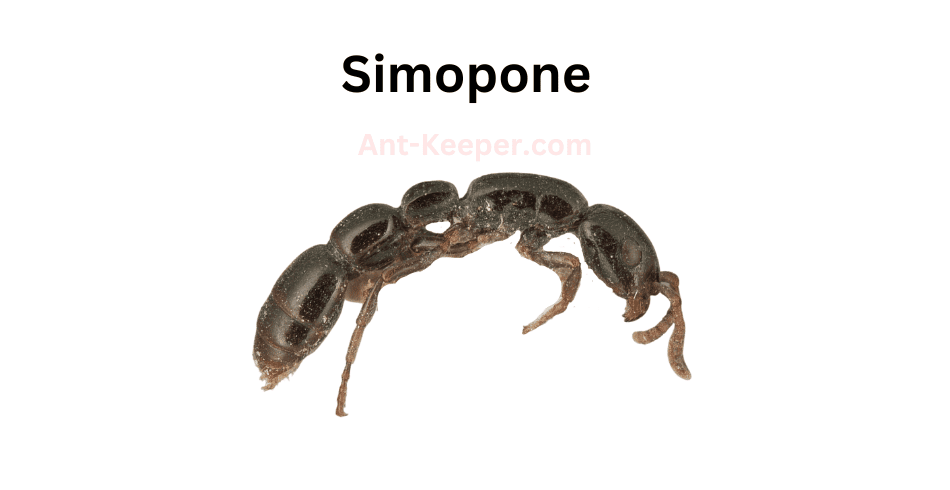
Simoponebe is a species of ant that belongs to the Formicidae family.
These ants are small in size, measuring only a few millimeters in length.
They are known for their aggressive behavior and are often found in large colonies.
Simoponebe ants are typically found in forested areas, where they build their nests in the soil or under rocks.
They are omnivorous, feeding on a variety of insects, fruits, and seeds.
These ants are also known to engage in trophallaxis, a behavior where they exchange food with other members of their colony.
One unique characteristic of Simoponebe ants is their ability to produce formic acid.
This acid is used as a defense mechanism against predators and can cause irritation or even blindness in animals that come into contact with it.
Simoponebe ants are also known for their symbiotic relationship with certain species of plants.
They will protect these plants from herbivores in exchange for a sugary substance produced by the plant.
Overall, Simoponebe ants play an important role in their ecosystem as both predators and protectors.
Their aggressive behavior and ability to produce formic acid make them a formidable opponent, while their symbiotic relationships with plants help to maintain a healthy balance in their environment.
77) Fire Ants, Solenopsis
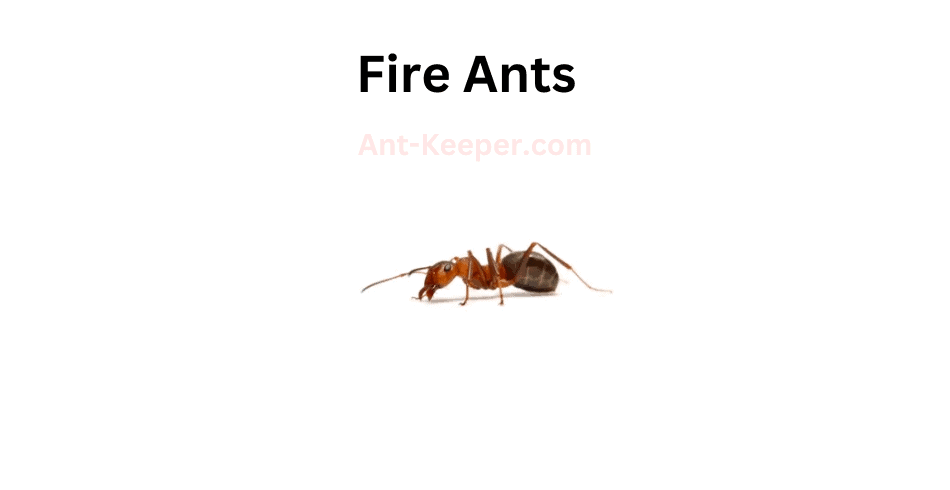
Fire ants are a type of ant that belongs to the Solenopsis genus.
They are known for their reddish-brown color and their aggressive behavior.
Fire ants are social insects that live in colonies, which can range in size from a few hundred to several thousand individuals.
Fire ants are omnivorous and feed on a variety of foods, including insects, seeds, and other small animals.
They are also known to scavenge for food and will often invade other ant colonies to steal their resources.
One of the most distinctive features of fire ants is their ability to sting.
They have a stinger located at the end of their abdomen, which they use to inject venom into their prey or enemies.
Fire ant stings can be painful and can cause an allergic reaction in some people.
Fire ants are also known for their ability to build large mounds, which can reach heights of up to 18 inches.
These mounds are made of soil and are used as a nesting site for the colony.
Fire ants are considered to be an invasive species in many parts of the world, as they can cause damage to crops and wildlife.
They are also a nuisance to humans, as their stings can be painful and their mounds can be unsightly.
Overall, fire ants are fascinating insects that have adapted to thrive in a variety of environments.
While they can be a nuisance, they are an important part of the ecosystem and play a vital role in controlling insect populations.
78) Sphinctomyrmex
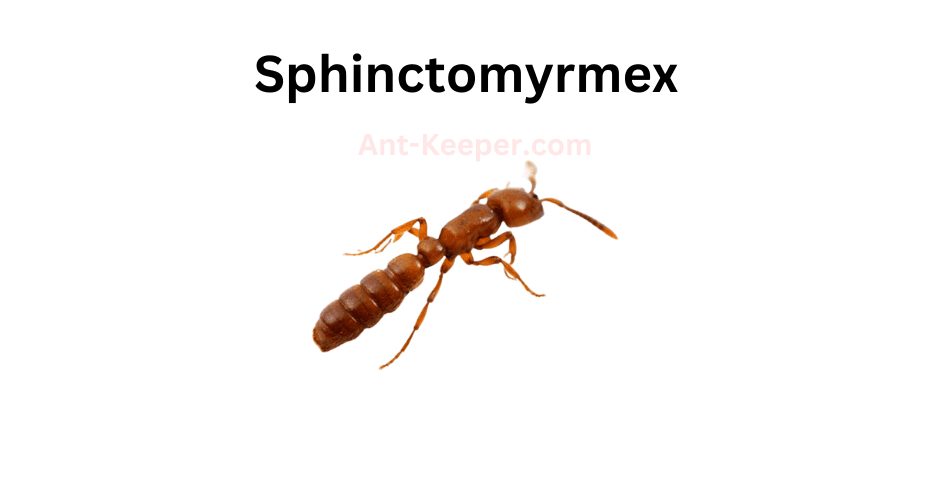
Sphinctomyrmex is a genus of ants that belongs to the subfamily Myrmicinae.
These ants are known for their unique morphology, which includes a distinct constriction between the thorax and abdomen, giving them their common name of "waist ants."
Sphinctomyrmex ants are relatively small, with workers measuring between 2-5mm in length.
They are typically reddish-brown in color, with a shiny exoskeleton.
These ants are known for their aggressive behavior, and will readily defend their nests against intruders.
One of the most interesting aspects of Sphinctomyrmex ants is their reproductive strategy.
Unlike many other ant species, Sphinctomyrmex queens do not mate with multiple males.
Instead, they mate with a single male and store his sperm in a specialized organ called the spermatheca.
This allows the queen to produce offspring with a high degree of relatedness, which may confer certain advantages in terms of colony cohesion and cooperation.
Sphinctomyrmex ants are found in a variety of habitats, including forests, grasslands, and deserts.
They are known to forage on the ground and in the understory, and will feed on a variety of food sources, including insects, nectar, and honeydew.
Overall, Sphinctomyrmex ants are a fascinating group of insects that exhibit a number of unique traits and behaviors.
Their distinctive morphology, aggressive behavior, and unusual reproductive strategy make them a subject of interest for researchers and ant enthusiasts alike.
79) Vampire Ants, Stigmatomma
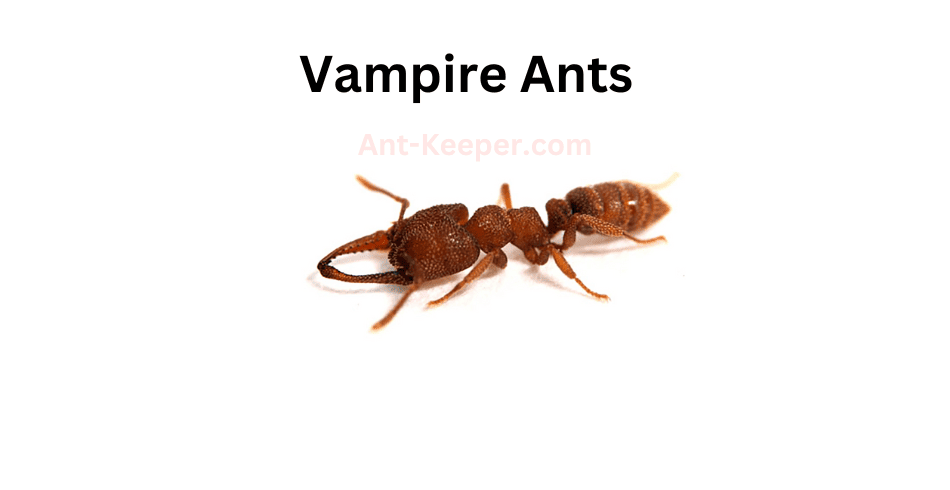
Vampire ants, also known as blood-sucking ants, are a species of ants that feed on the blood of other insects.
These ants are known for their unique feeding behavior, which involves biting into the exoskeleton of their prey and then sucking out their blood.
Vampire ants are typically found in tropical and subtropical regions, where they live in colonies of up to several thousand individuals.
They are known for their aggressive behavior and will attack other insects, including larger prey such as grasshoppers and caterpillars.
One of the most interesting aspects of vampire ants is their ability to adapt to their environment.
In some cases, these ants have been known to feed on the blood of their own colony members when other sources of food are scarce.
Vampire ants are also known for their unique physical characteristics.
They have long, curved mandibles that are used to bite into the exoskeleton of their prey.
They also have specialized mouthparts that allow them to suck out the blood of their victims.
Despite their aggressive behavior and blood-sucking tendencies, vampire ants play an important role in their ecosystem.
They help to control the populations of other insects and contribute to the overall balance of their environment.
Overall, vampire ants are a fascinating species of ants that have adapted to their environment in unique and interesting ways.
Their behavior and physical characteristics make them a subject of interest for scientists and nature enthusiasts alike.
80) Miniature Trap-Jaw Ants, Strumigenys
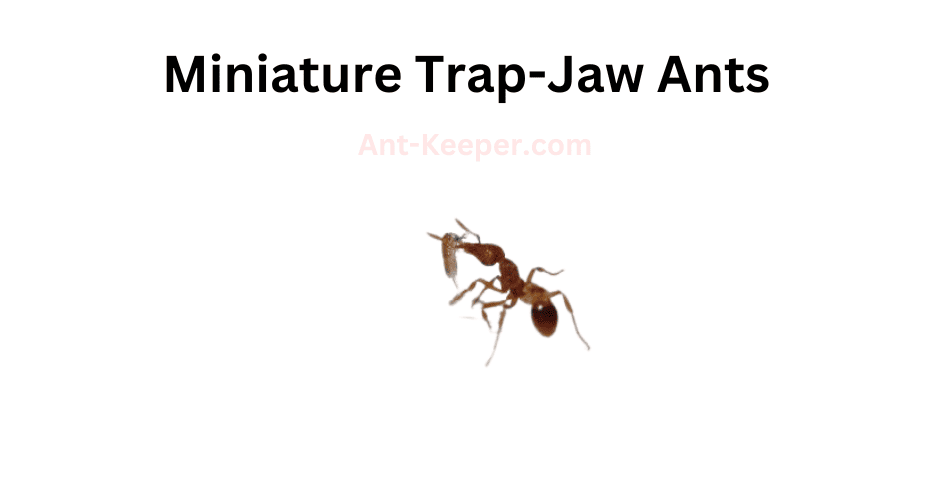
The Miniature Trap-Jaw Ants, scientifically known as Odontomachus sp., are a species of ants that belong to the family Formicidae.
These ants are known for their unique and powerful mandibles, which they use to capture prey and defend their colonies.
The Miniature Trap-Jaw Ants are relatively small in size, measuring only a few millimeters in length.
They have a dark brown or black coloration and a slender body shape.
Their most distinctive feature is their mandibles, which are elongated and can snap shut with incredible force.
These mandibles are used to capture prey, crush seeds, and defend the colony against predators.
The Miniature Trap-Jaw Ants are found in a variety of habitats, including forests, grasslands, and deserts.
They are known to be active during the day and are often seen foraging for food.
These ants are omnivorous and feed on a variety of food sources, including insects, nectar, and seeds.
The Miniature Trap-Jaw Ants are social insects and live in colonies that can range in size from a few dozen to several thousand individuals.
The colony is typically led by a queen, who is responsible for laying eggs and maintaining the colony's population.
The workers are responsible for foraging, caring for the young, and defending the colony.
Overall, the Miniature Trap-Jaw Ants are fascinating insects that have evolved unique adaptations to survive in their environment.
Their powerful mandibles and social behavior make them an important part of many ecosystems.
81) Tapinolepis
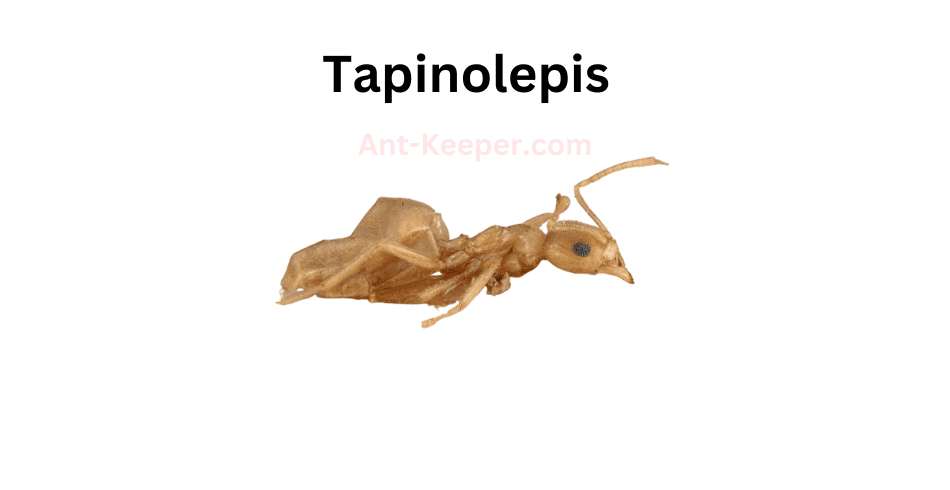
Tapinolepis is a genus of ants that belongs to the family Formicidae.
The ants in this genus are small in size, measuring between 2-3 mm in length.
They are typically found in forested areas, where they nest in soil or leaf litter.
Tapinolepis ants are known for their unique morphology, which includes a distinctive head shape and elongated mandibles.
These features are thought to be adaptations for feeding on small arthropods and other invertebrates.
Like many ant species, Tapinolepis ants live in highly organized colonies, with a queen and numerous workers.
The queen is responsible for laying eggs, while the workers are responsible for foraging, nest maintenance, and caring for the young.
Despite their small size, Tapinolepis ants play an important role in their ecosystem.
They are known to be important predators of other small invertebrates, and their activities in the soil can help to improve soil structure and nutrient cycling.
Overall, Tapinolepis ants are a fascinating and important group of insects that are worthy of further study and conservation efforts.
82) Tapinoma

Tapinoma is a genus of ants that belongs to the family Formicidae.
The species Tapinoma is a small ant that measures about 2-3 mm in length.
They are commonly found in urban and suburban areas, and are known to invade homes and buildings in search of food and shelter.
Tapinoma ants are light brown in color and have a slender body with long legs.
They have a distinctively shaped head that is wider than their thorax, and they possess a pair of antennae that are bent at a right angle.
These ants are known for their ability to form large colonies, which can consist of thousands of individuals.
Tapinoma ants are omnivorous and feed on a variety of food sources, including insects, nectar, and honeydew.
They are also known to scavenge for food in garbage cans and other waste areas.
These ants are attracted to sweet and sugary substances, and will often invade kitchens and pantries in search of food.
Tapinoma ants are not known to be aggressive towards humans, but they can become a nuisance when they invade homes and buildings.
They are known to build their nests in wall voids, under floors, and in other hidden areas.
If left unchecked, these ants can cause damage to structures and can contaminate food sources.
Overall, Tapinoma ants are a common pest in many parts of the world.
While they are not harmful to humans, they can be a nuisance when they invade homes and buildings.
Proper pest control measures can help to prevent infestations and keep these ants at bay.
83) Pale-Footed Ants, Technomyrmex
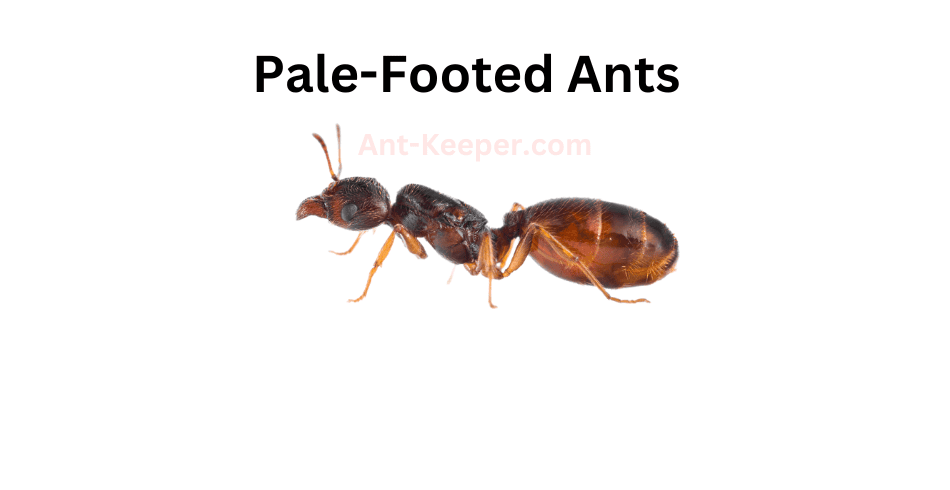
Pale-Footed Ants, also known as Pheidole pallidula, are a species of ant belonging to the family Formicidae.
These ants are typically small in size, measuring around 2-3mm in length, and are characterized by their pale yellowish-brown coloration and distinctive pale-colored feet.
Pale-Footed Ants are known for their highly organized social structure, which is divided into different castes including workers, soldiers, and reproductive individuals.
Workers are responsible for foraging for food, caring for the young, and maintaining the nest, while soldiers are tasked with defending the colony from predators and other threats.
One of the most interesting aspects of Pale-Footed Ant behavior is their ability to engage in "tandem running," a process in which two ants run together, with the follower using its antennae to track the movements of the leader.
This behavior is thought to help the ants navigate their environment more efficiently and locate food sources more quickly.
Pale-Footed Ants are also known for their unique feeding habits, which include a preference for sweet liquids such as nectar and honeydew.
They are also known to engage in trophallaxis, a process in which food is shared between members of the colony through mouth-to-mouth transfer.
Overall, Pale-Footed Ants are a fascinating species with a complex social structure and unique behaviors.
Their small size and inconspicuous appearance make them easy to overlook, but their importance in maintaining ecological balance and contributing to the overall health of their ecosystem should not be underestimated.
84) Slave-Making Ants, Temnothorax
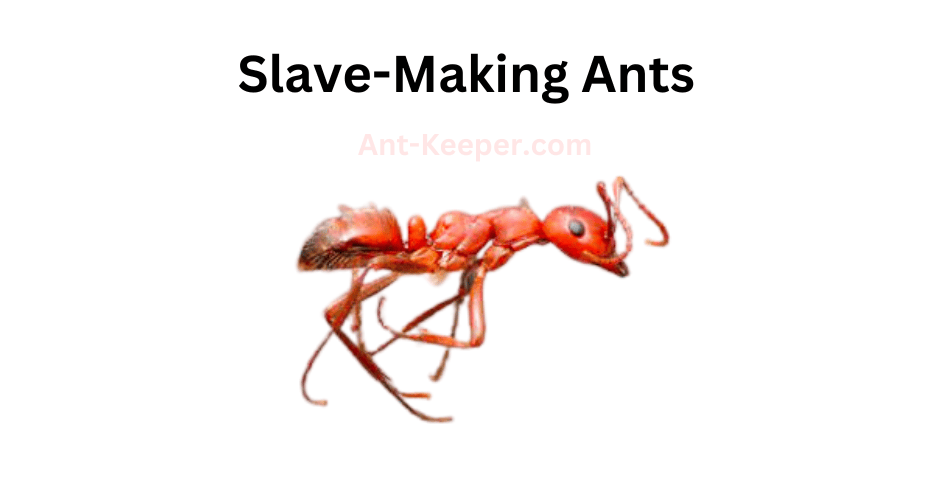
The Slave-Making Ants, also known as Dulosis ants, are a group of social insects that engage in a unique behavior of raiding and enslaving other ant colonies.
These ants belong to the subfamily Formicinae and are found in various parts of the world.
The Slave-Making Ants have a complex social structure, with a queen, workers, and soldiers.
The queen is responsible for laying eggs, while the workers and soldiers carry out various tasks such as foraging, nest building, and defense.
However, unlike other ant species, the Slave-Making Ants do not rely solely on their own colony for survival.
Instead, these ants raid nearby colonies of other ant species, using their superior strength and numbers to overpower the defenders.
The Slave-Making Ants then carry off the pupae of the conquered colony back to their own nest.
Once the pupae hatch, they are raised by the Slave-Making Ants and forced to work as slaves for the colony.
The Slave-Making Ants have evolved a number of adaptations to facilitate their slave-raiding behavior.
For example, they have a highly developed sense of smell, which allows them to locate and target specific ant colonies.
They also have strong mandibles and powerful stingers, which they use to subdue their prey.
Despite their aggressive behavior, the Slave-Making Ants play an important role in their ecosystem.
By raiding other ant colonies, they help to control the population of competing ant species.
Additionally, the enslaved ants provide a source of food and labor for the Slave-Making Ants, allowing them to thrive in environments where resources are scarce.
Overall, the Slave-Making Ants are a fascinating and unique species of ant, with a complex social structure and a highly specialized behavior.
While their slave-raiding behavior may seem cruel, it is an important part of their survival strategy and has helped them to thrive in a variety of environments.
85) Terataner
Teratanerbe is a species of ant that belongs to the family Formicidae.
These ants are known for their unique physical characteristics and behavior.
The workers of Teratanerbe are small in size, measuring only a few millimeters in length.
They have a dark brown or black coloration and a shiny exoskeleton.
One of the most distinctive features of Teratanerbe ants is their mandibles.
These ants have large, powerful mandibles that they use to capture prey and defend their colony.
The mandibles are also used to excavate soil and create tunnels within their nest.
Teratanerbe ants are social insects that live in colonies.
The colonies are typically small, consisting of only a few hundred individuals.
The queen is the largest member of the colony and is responsible for laying eggs.
The workers are responsible for caring for the young, foraging for food, and defending the colony.
These ants are primarily found in forested areas and are known to nest in soil and leaf litter.
They are omnivorous and feed on a variety of food sources, including insects, nectar, and plant sap.
Teratanerbe ants play an important role in their ecosystem.
They help to control insect populations and contribute to soil health through their tunneling and excavation activities.
Despite their small size, these ants are a vital part of the forest ecosystem.
86) Pavement Ants, Tetramorium
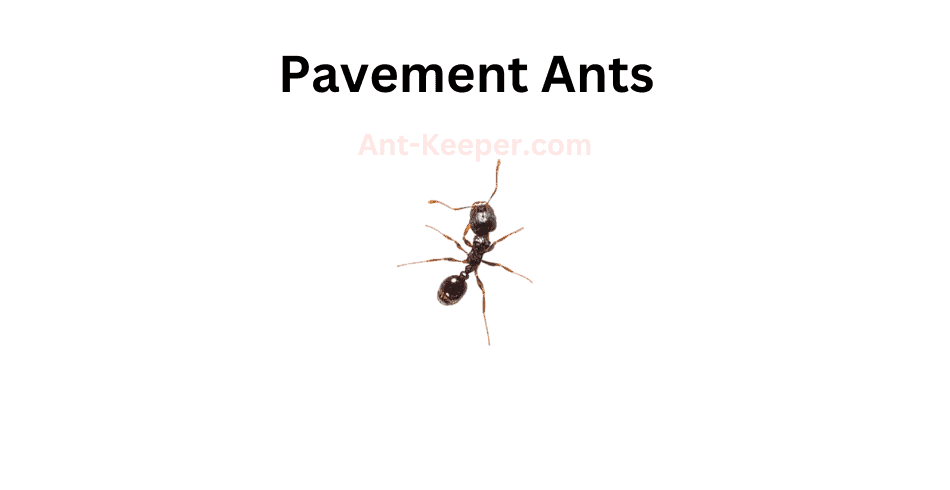
Pavement ants, also known as Tetramorium caespitum, are a species of ant that belong to the family Formicidae.
These ants are commonly found in urban and suburban areas, where they build their nests in cracks and crevices in pavement, sidewalks, and buildings.
Pavement ants are small in size, measuring between 2.5 to 4 mm in length.
They are typically dark brown or black in color, with lighter colored legs and antennae.
These ants are known for their aggressive behavior and will defend their nests fiercely against intruders.
Pavement ants are omnivorous, feeding on a variety of foods including insects, seeds, and sweet substances such as honeydew and nectar.
They are also known to scavenge for food in garbage cans and other waste areas.
Pavement ants are social insects, living in colonies that can range in size from a few hundred to several thousand individuals.
The colony is typically led by a queen ant, who is responsible for laying eggs and maintaining the colony.
Pavement ants are considered a nuisance pest, as they can invade homes and buildings in search of food and shelter.
They are also known to cause damage to pavement and other structures by excavating soil and creating tunnels.
Overall, pavement ants are a common and adaptable species of ant that play an important role in urban ecosystems.
While they may be a nuisance to humans, they are an important food source for many other animals and help to maintain the balance of the ecosystem.
87) Old World Slender Ants, Tetraponera
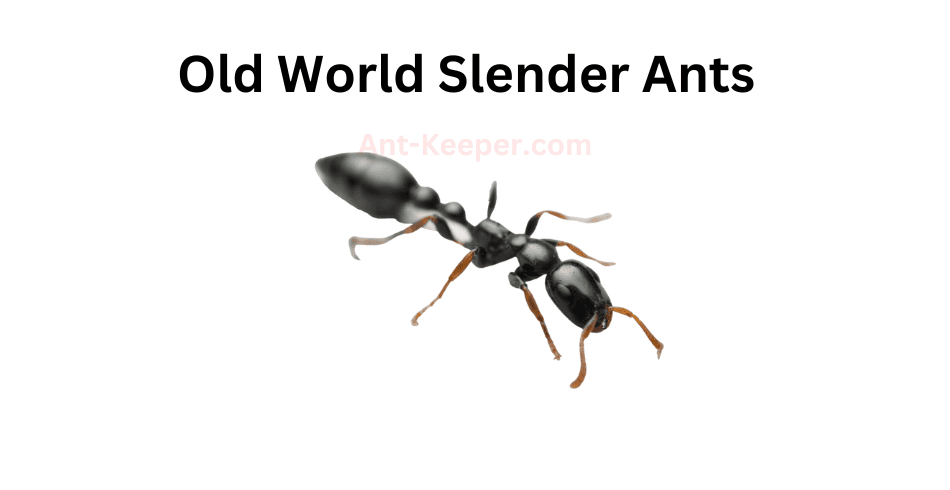
The Old World Slender Ants are a group of ants belonging to the genus Leptomyrmex.
They are found in various regions of the world, including Asia, Africa, and Australia.
These ants are known for their slender and elongated bodies, which are typically brown or black in color.
Old World Slender Ants are social insects that live in colonies.
The colonies are typically small, with only a few hundred individuals.
The ants are highly organized and have a strict hierarchy, with a queen at the top and workers and soldiers below her.
The diet of Old World Slender Ants consists mainly of insects and other small invertebrates.
They are also known to feed on nectar and honeydew produced by aphids and other insects.
Old World Slender Ants are known for their aggressive behavior and are capable of inflicting painful stings.
They are also known to defend their colonies fiercely against intruders.
Overall, the Old World Slender Ants are an interesting and important group of ants that play an important role in their ecosystems.
Their unique physical characteristics and social behavior make them a fascinating subject for scientific study.
88) Groove-Headed Fierce Ants, Tetramorium Simillimum
Groove-Headed Fierce Ants, also known as GFA, are a species of ants that belong to the Formicidae family.
They are known for their aggressive behavior and their ability to defend their colonies fiercely.
The name "groove-headed" comes from the distinct groove on their head that separates their eyes from their antennae.
GFAs are relatively small, measuring only about 3-5 millimeters in length.
They have a dark brown or black coloration and a slender body shape.
Their mandibles are long and sharp, which they use to capture prey and defend their colony.
These ants are social insects and live in large colonies that can contain up to several thousand individuals.
The colony is usually led by a queen ant, who is responsible for laying eggs and maintaining the colony's population.
The workers, which are sterile females, are responsible for foraging for food, caring for the young, and defending the colony.
GFAs are omnivorous and feed on a variety of food sources, including insects, nectar, and honeydew.
They are also known to scavenge for dead animals and consume plant material.
One of the most notable characteristics of GFAs is their aggressive behavior.
They are known to attack and kill other insects, including other ant species.
When threatened, they will swarm and bite their attacker, injecting formic acid into their wound.
This acid can cause pain and irritation to the attacker, and in some cases, can even be lethal.
Overall, GFAs are a fascinating species of ants that exhibit unique behaviors and characteristics.
Their fierce nature and ability to defend their colony make them an important part of their ecosystem.
Check Out Some Of Our Other Ants By Location Posts
| Types Of Ants In Shaanxi, China | Shaanxi, a province located in the northwest region of China, boasts a diverse and unique environment. The province is characterized by its varied topography, ranging ... |
| Types Of Ants In Senegal | Located in West Africa, Senegal is a country known for its diverse and unique environment. The country is bordered by the Atlantic Ocean to the ... |
| Types Of Ants In Saint-Barthélemy | Saint-Barthélemy, also known as St. Barts, is a small island located in the Caribbean Sea. It is an overseas collectivity of France and is situated ... |
| Types Of Ants In Buenos Aires, Argentina | Buenos Aires, the capital city of Argentina, is located in the southeastern region of South America. The city is known for its vibrant culture, rich ... |
| Types Of Ants In Newfoundland, Canada | Newfoundland, Canada is a region known for its rugged and diverse environment. Located on the eastern coast of Canada, it is surrounded by the Atlantic ... |
